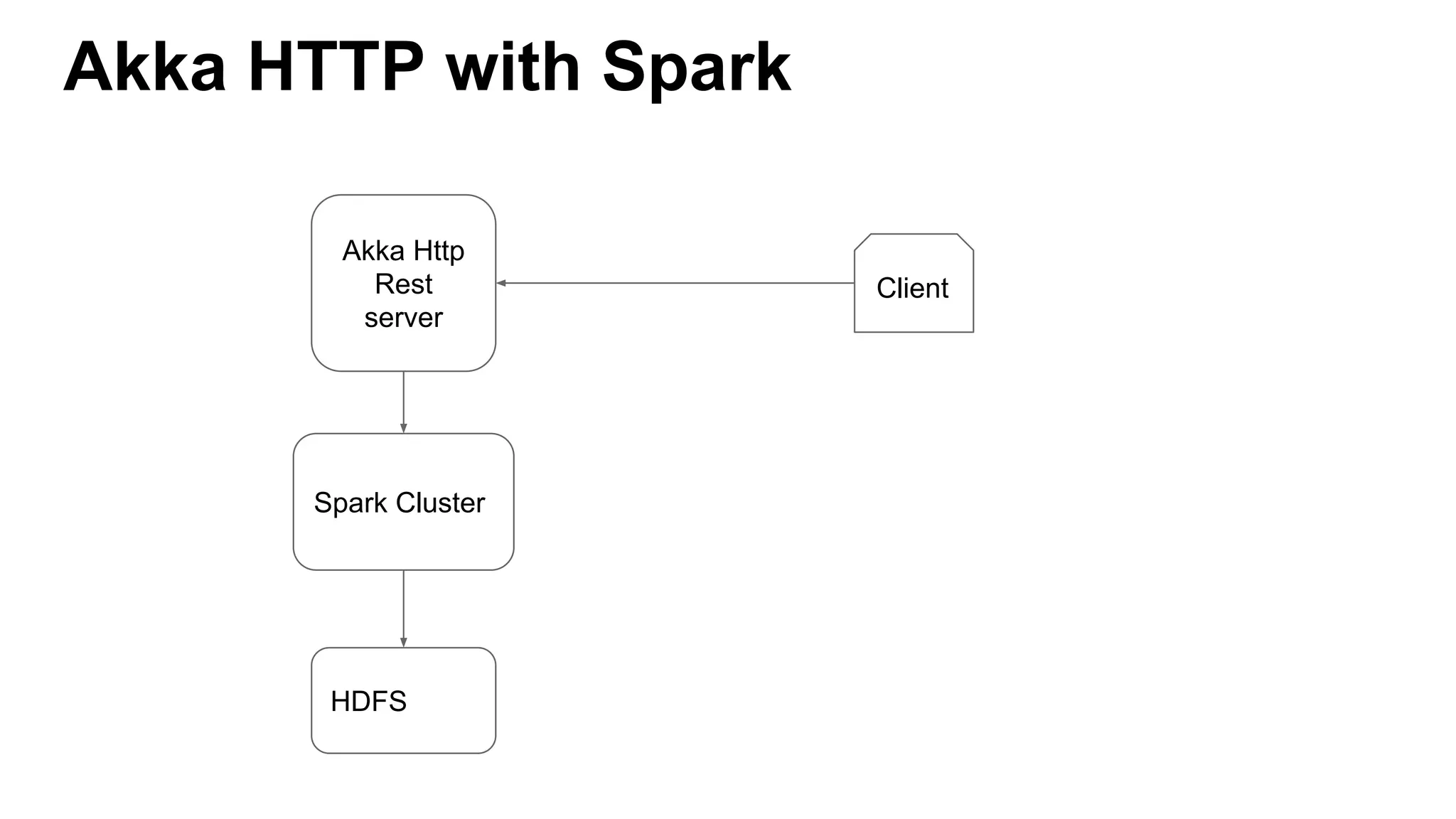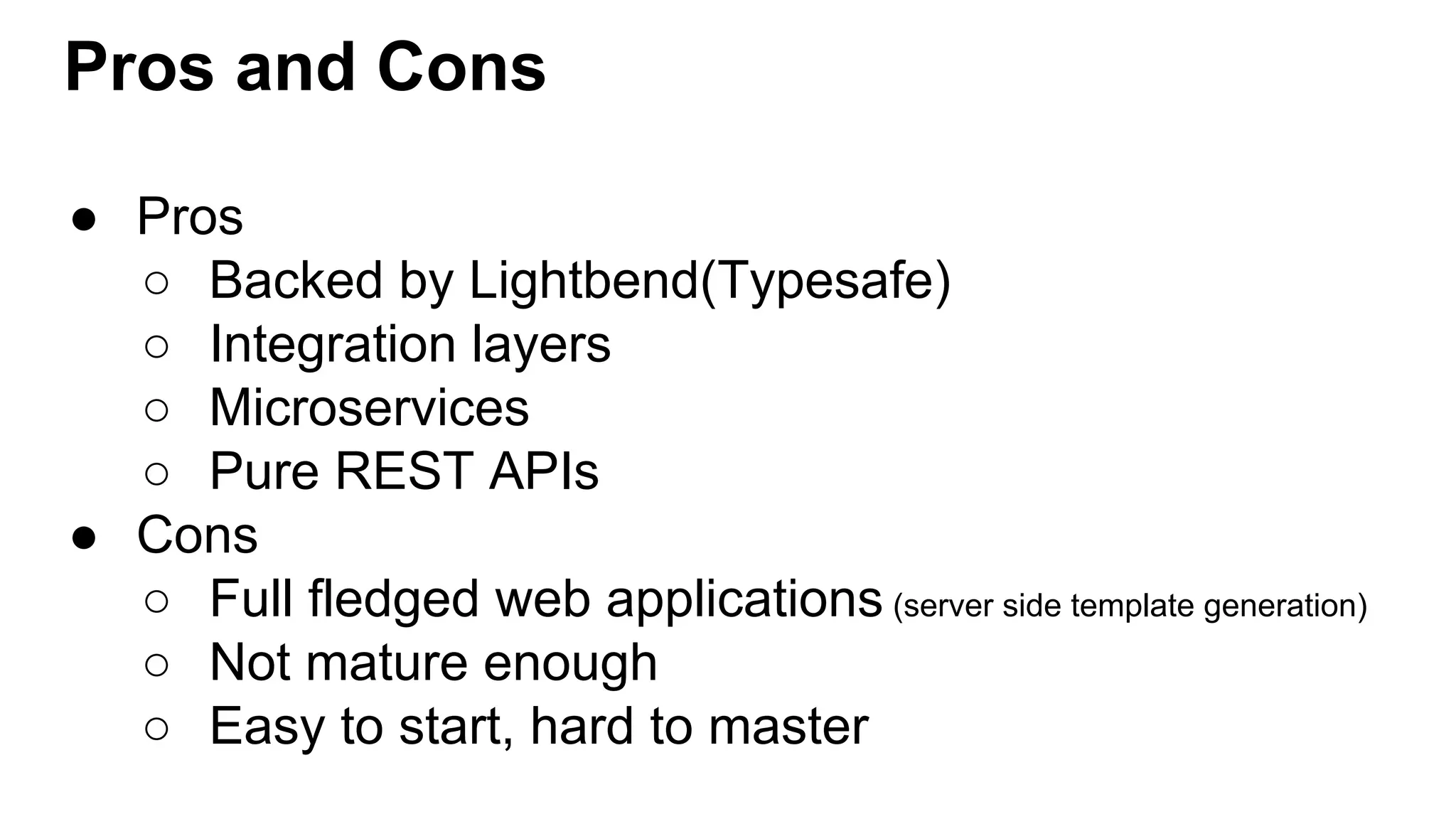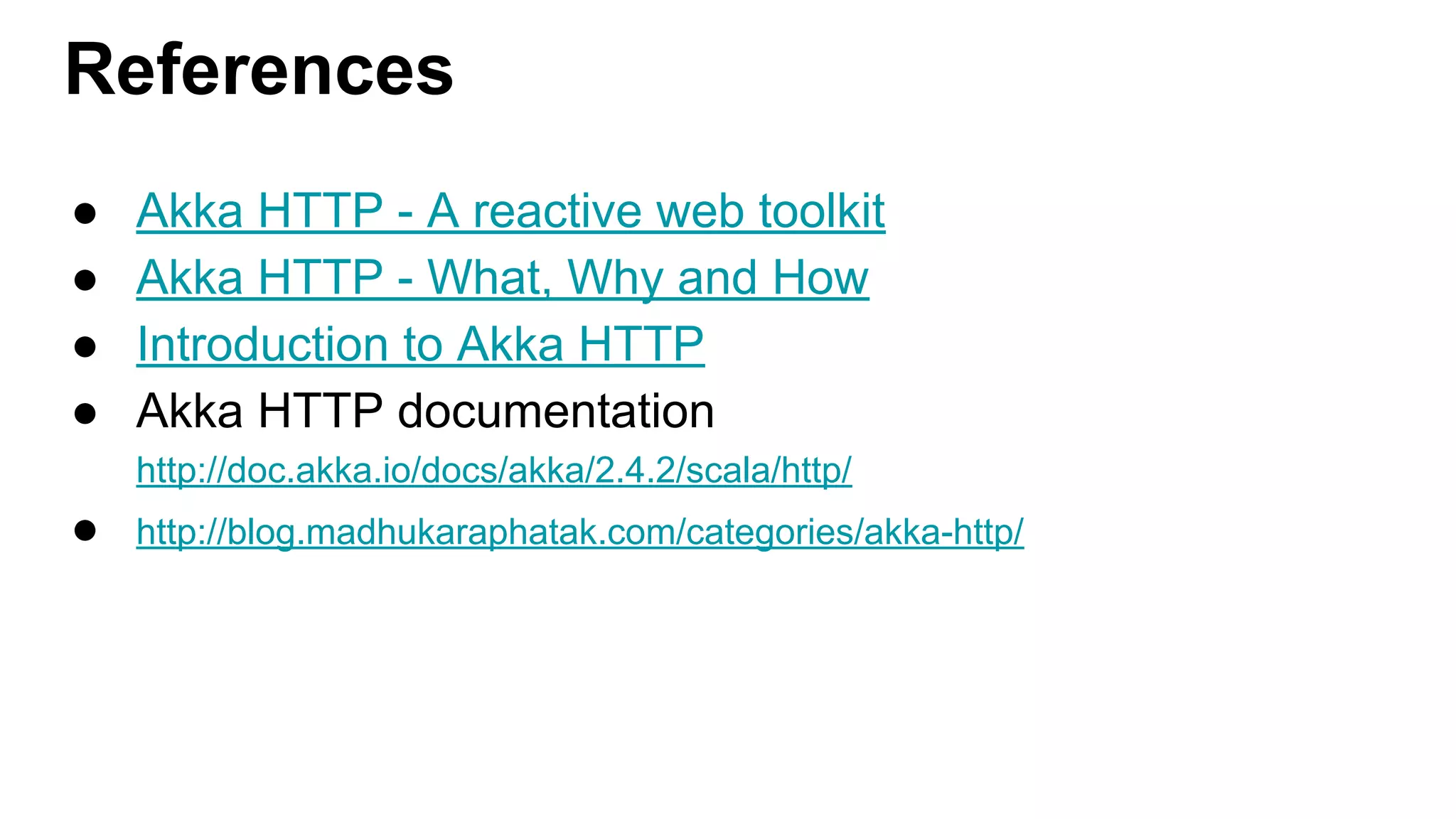Akka HTTP is a toolkit for building scalable REST services in Scala. It provides a high-level API built on top of Akka actors and Akka streams for writing asynchronous, non-blocking and resilient microservices. The document discusses Akka HTTP's architecture, routing DSL, directives, testing, additional features like file uploads and websockets. It also compares Akka HTTP to other Scala frameworks and outlines pros and cons of using Akka HTTP for building REST APIs.
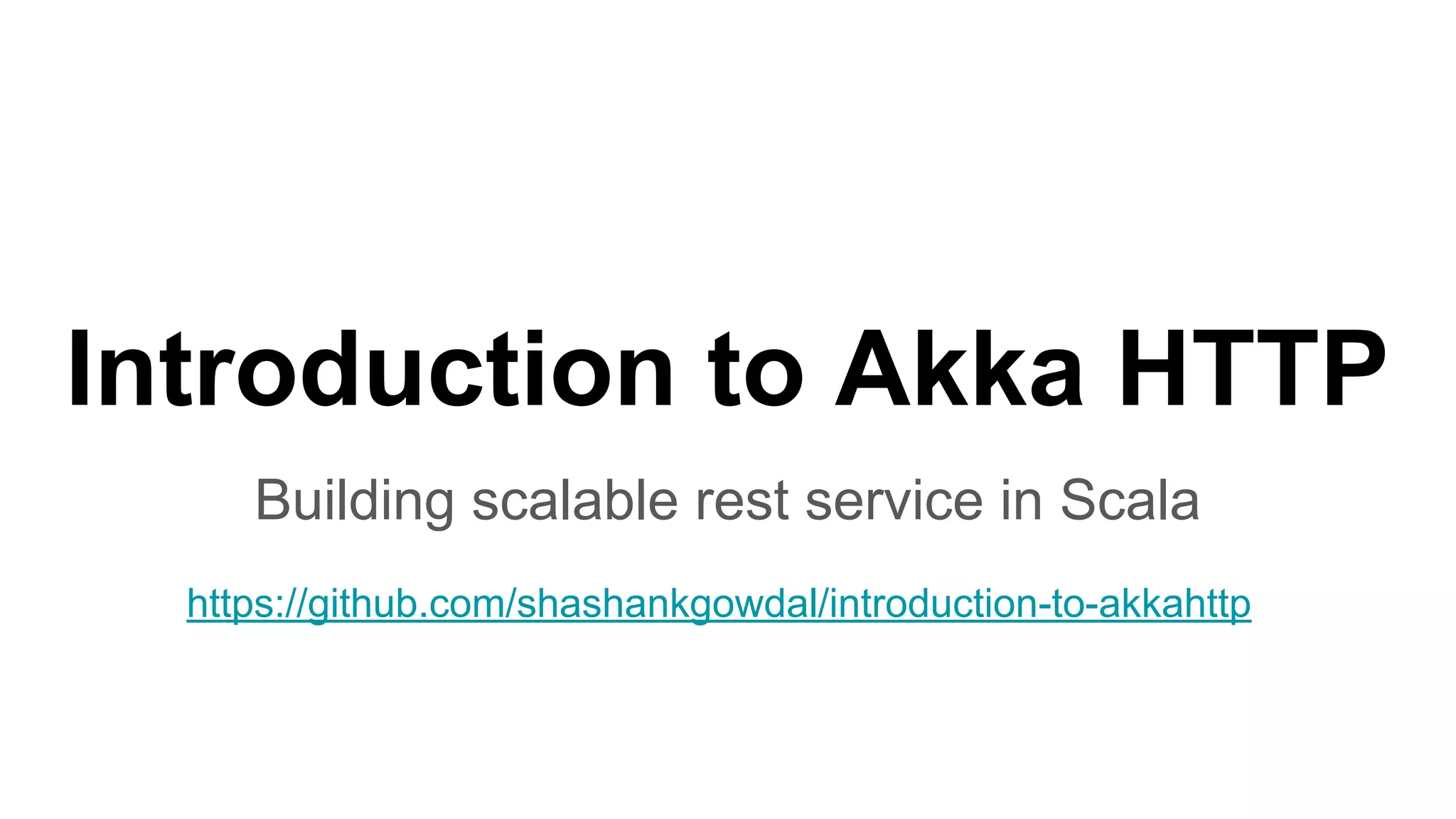

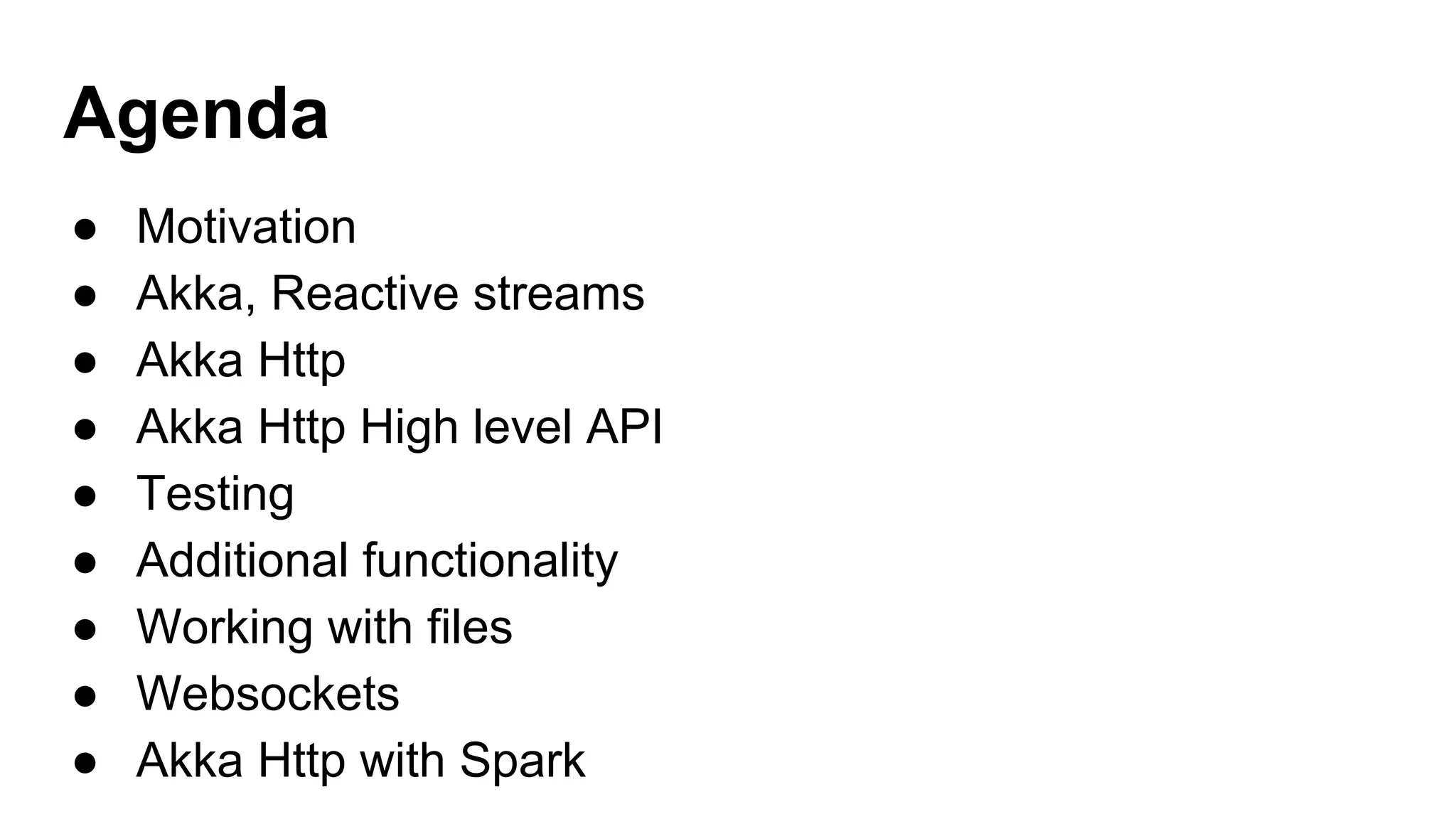
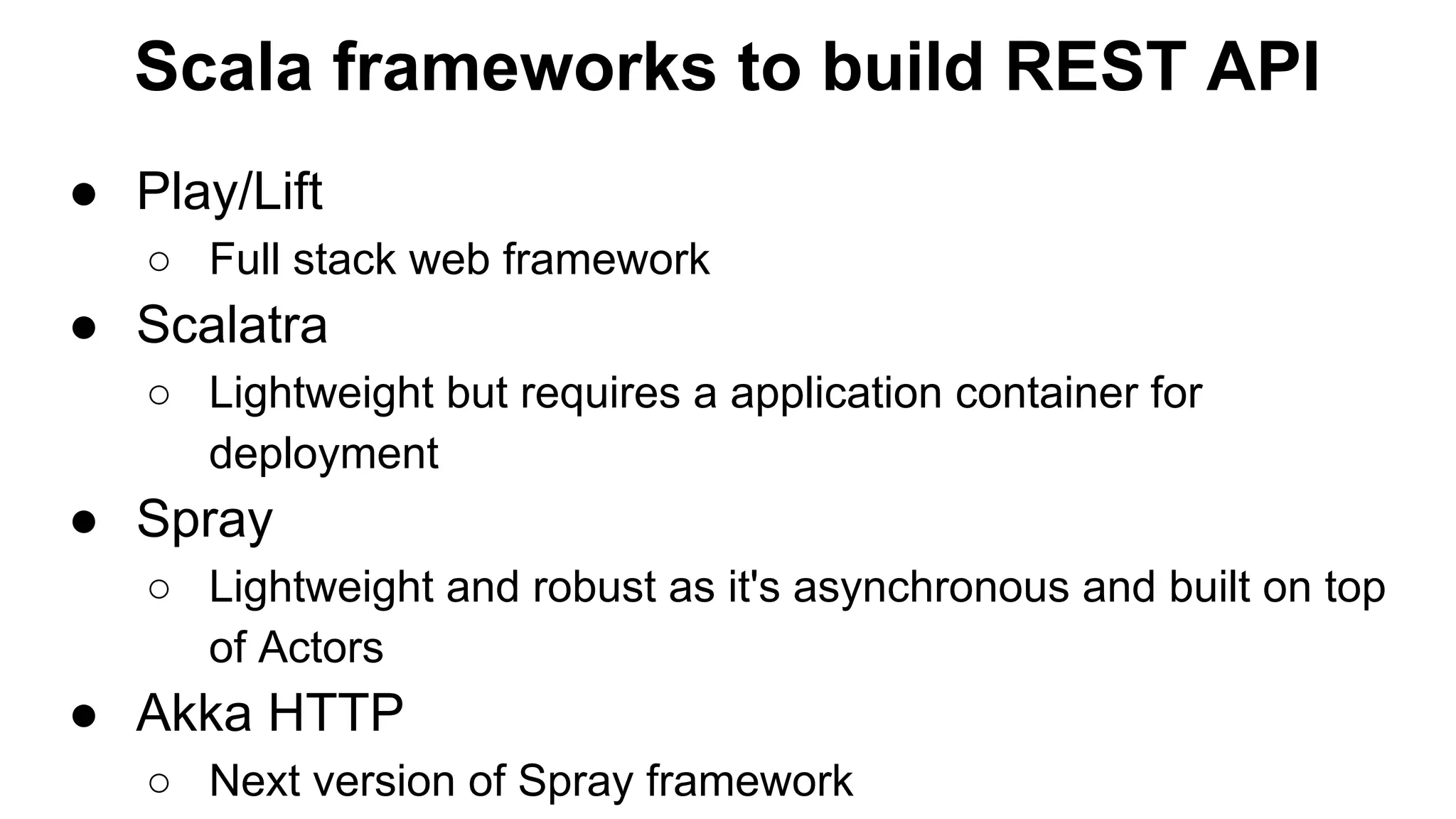
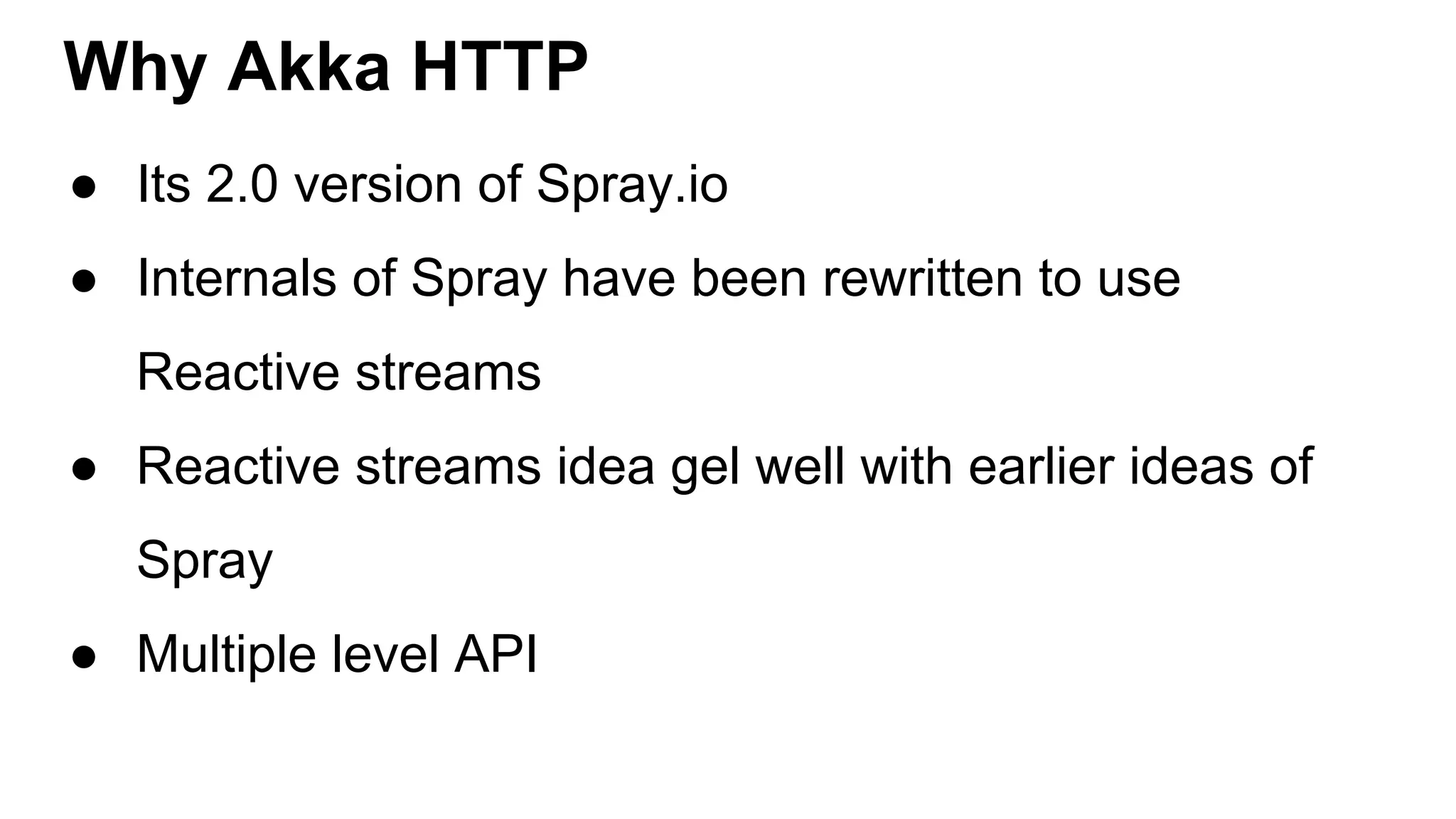
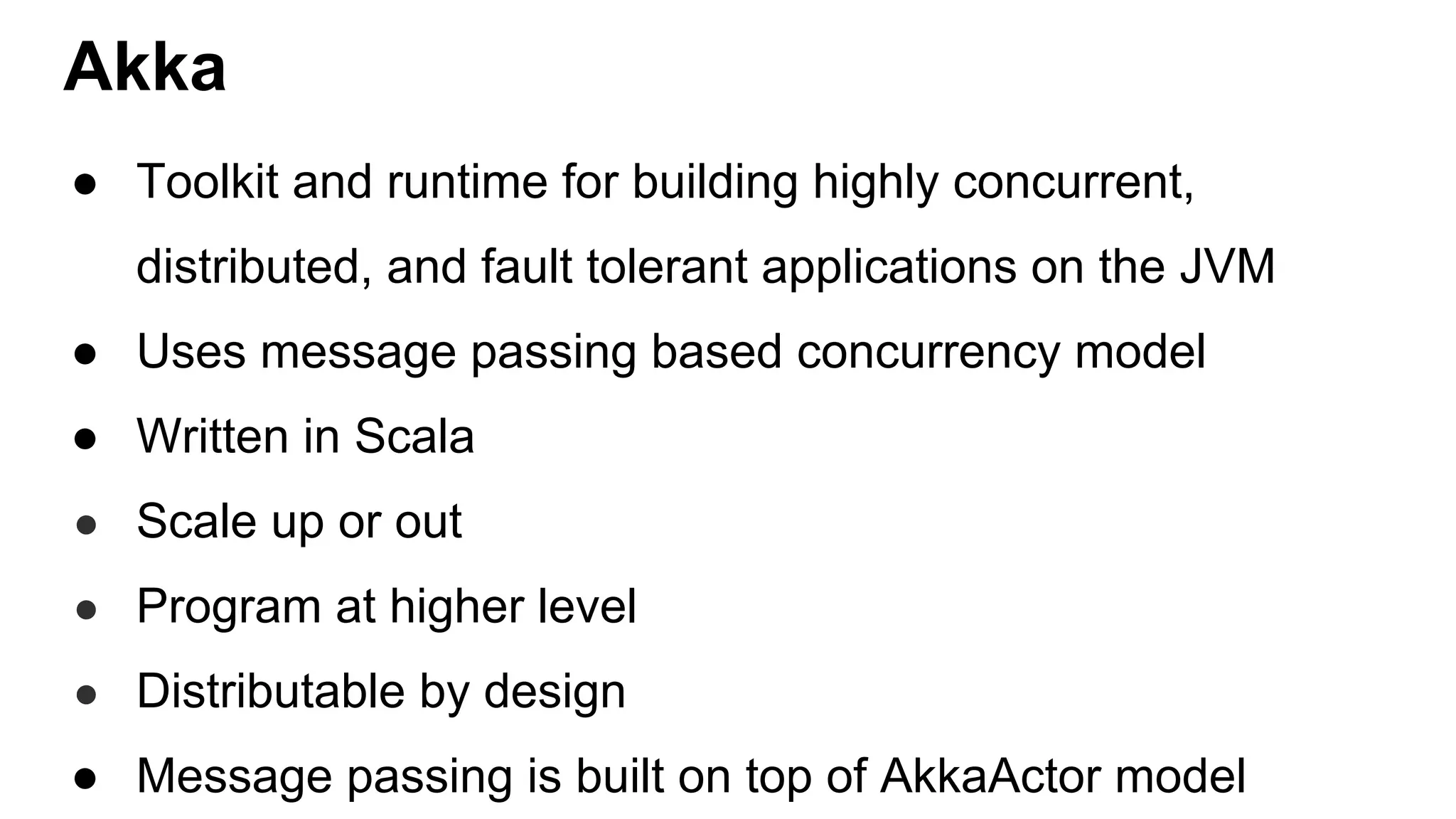
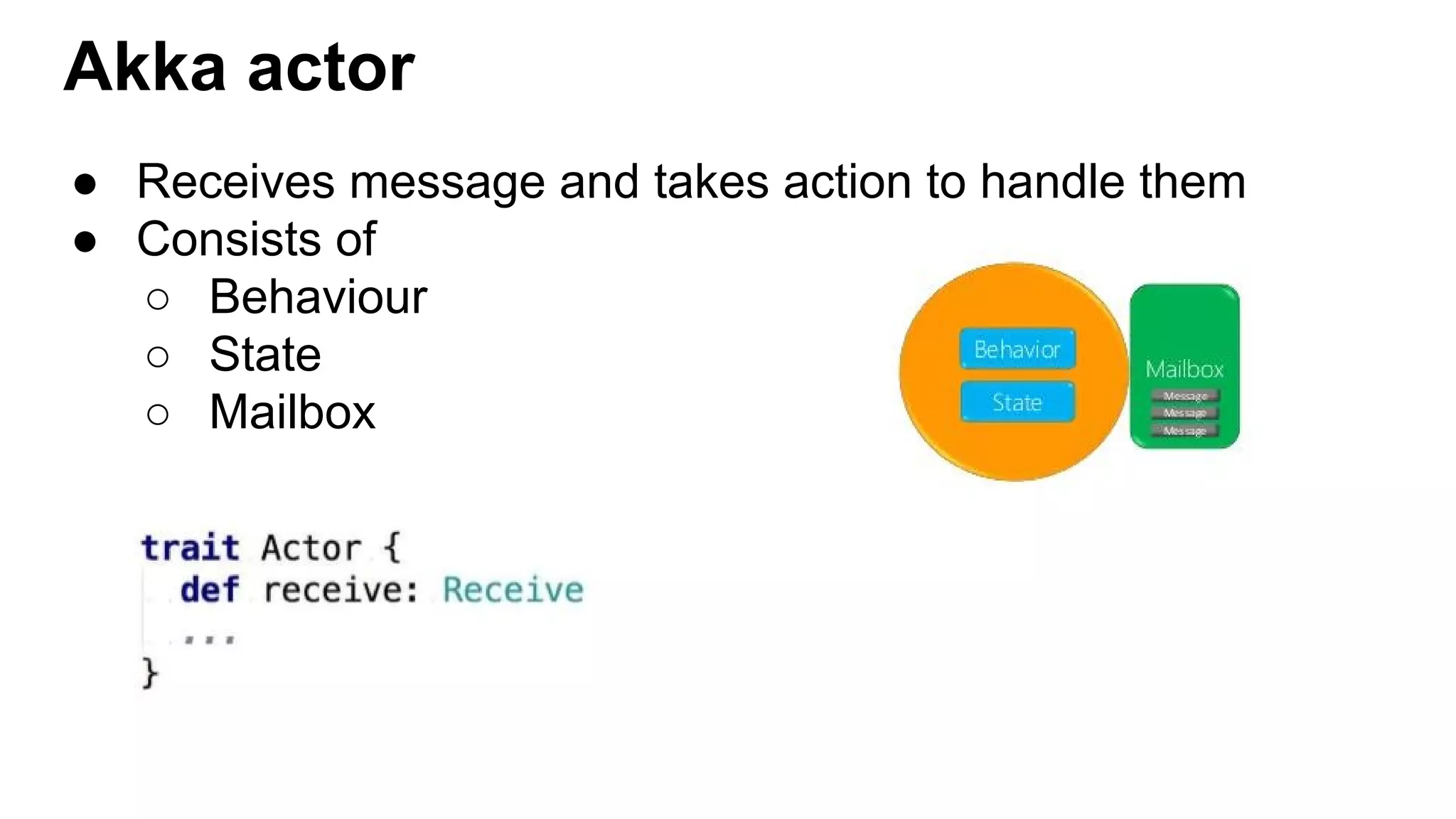
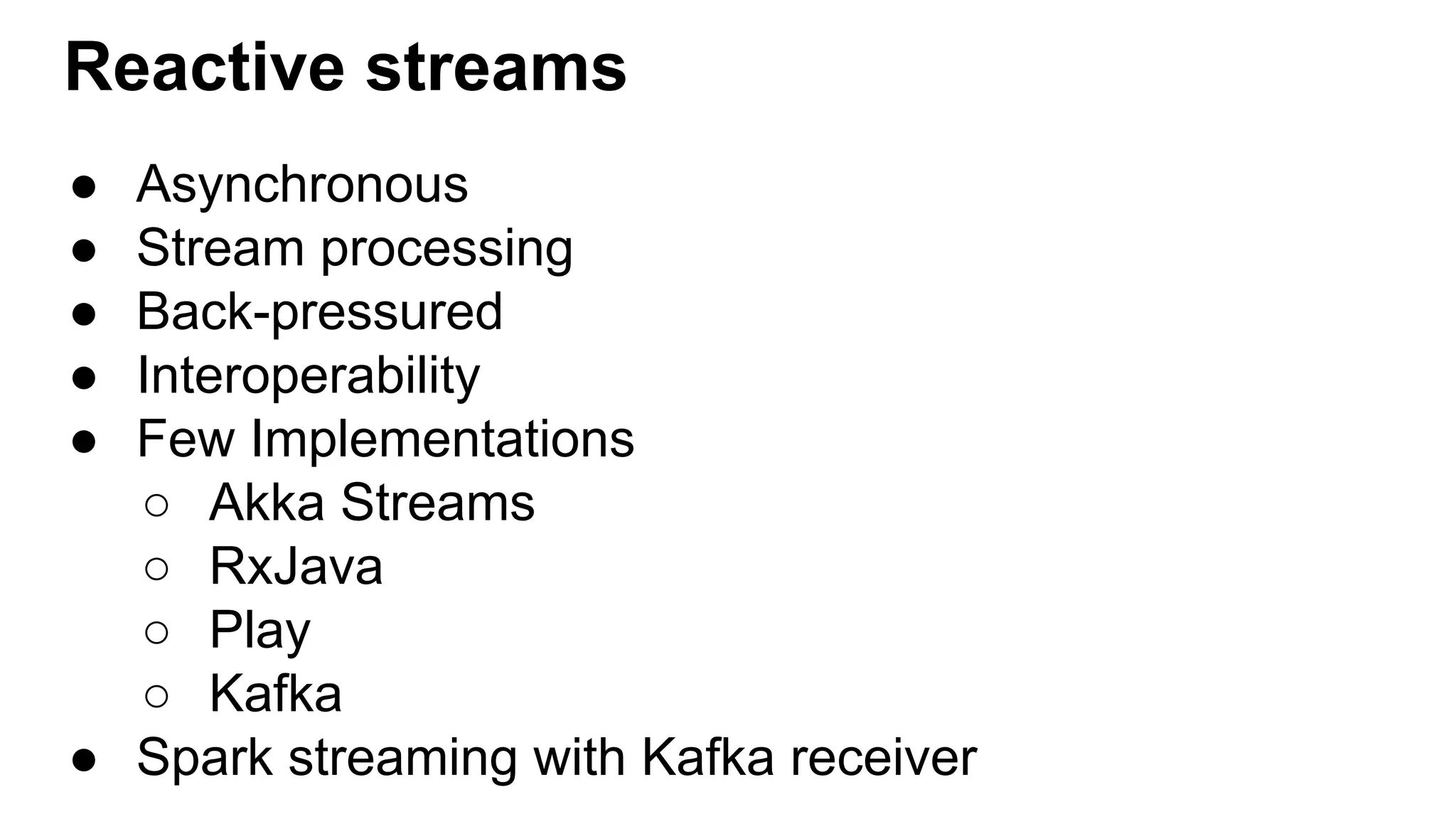
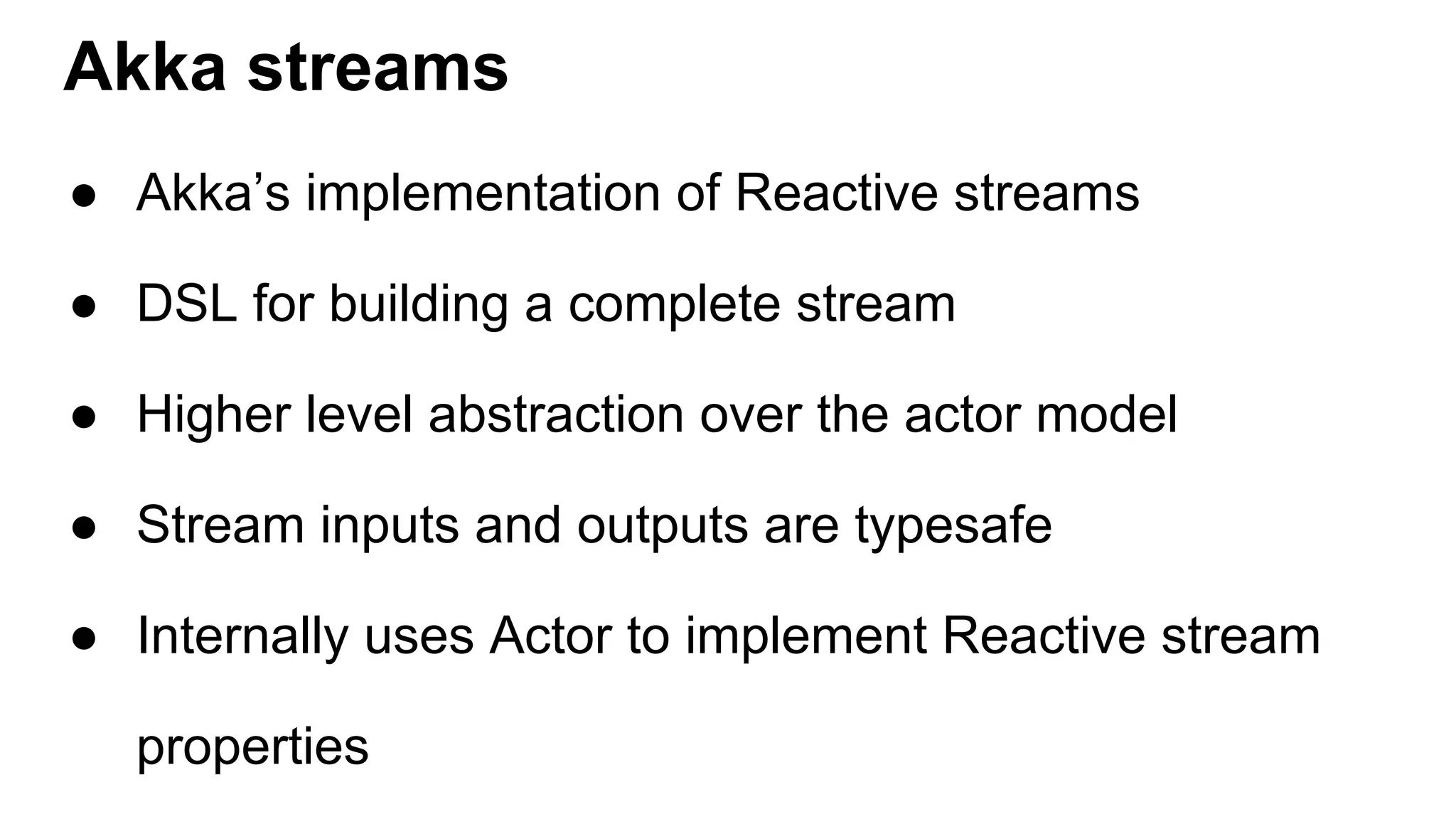
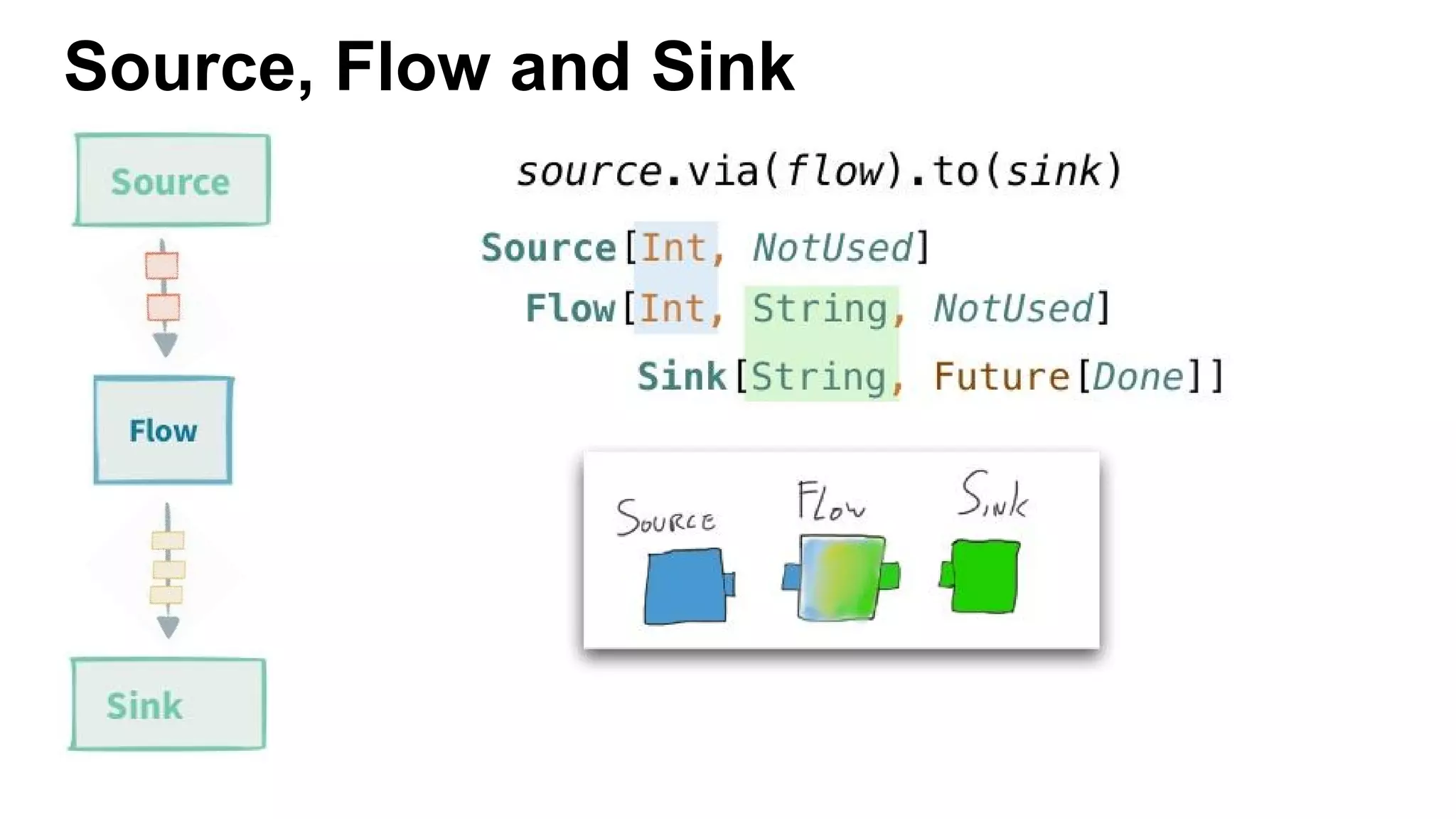
![Source, Flow and Sink com.shashank.akkahttp.IntroductionToStream implicit val sys = ActorSystem("IntroductionToStream") implicit val mat:Materializer = ActorMaterializer() val source = Source(List(1, 2, 3)) val flow = Flow[Int].map(_.toString) val sink = Sink.foreach(println) val runnableGraph = source via flow to sink runnableGraph.run()](https://image.slidesharecdn.com/buildingscalablerestserviceusingakkahttp-161107190200/75/Building-scalable-rest-service-using-Akka-HTTP-11-2048.jpg)
![HTTP server with Akka streams HTTPServer as a: Flow[HttpRequest, HttpResponse] Socket input Bytes ⇒ HttpRequest HttpRequest ⇒ HttpResponse HttpResponse ⇒ Bytes Socket Sink](https://image.slidesharecdn.com/buildingscalablerestserviceusingakkahttp-161107190200/75/Building-scalable-rest-service-using-Akka-HTTP-12-2048.jpg)
 HttpResponse(StatusCodes.OK, entity = "Hello!") }) Http().bindAndHandle(requestResponseFlow, "localhost", 8080) com.shashank.akkahttp.basic.serving.StreamsServing](https://image.slidesharecdn.com/buildingscalablerestserviceusingakkahttp-161107190200/75/Building-scalable-rest-service-using-Akka-HTTP-13-2048.jpg)
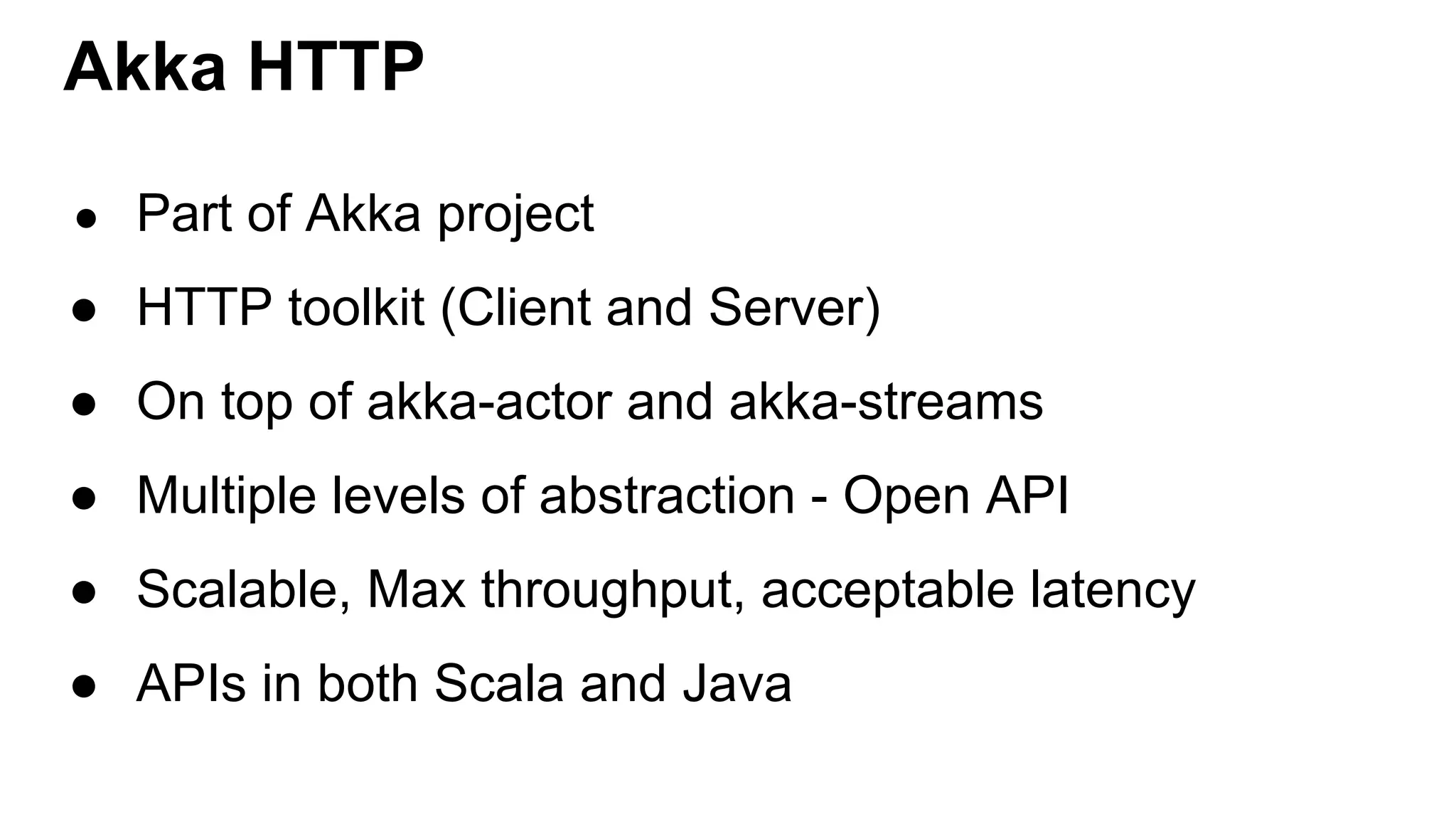
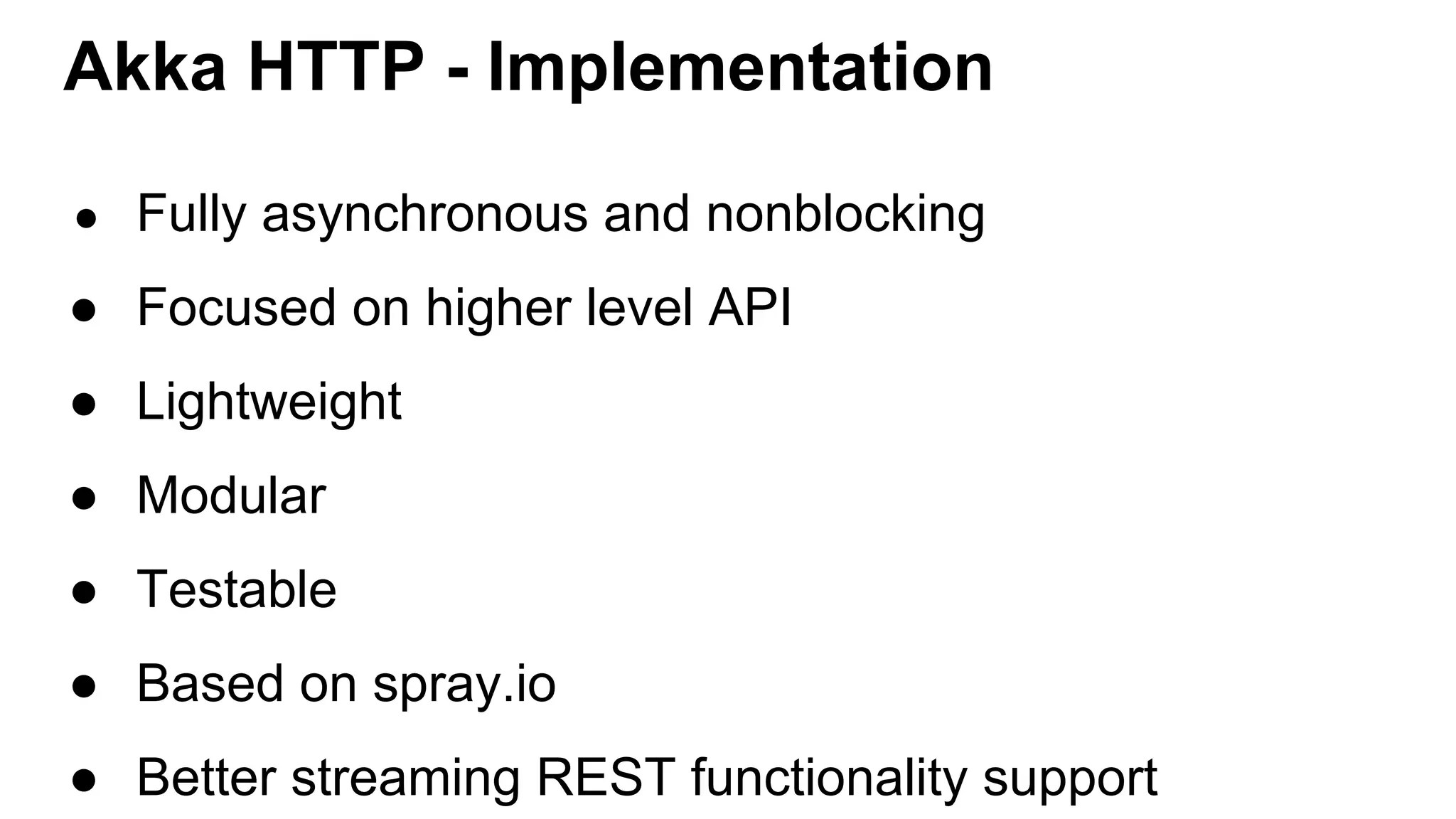
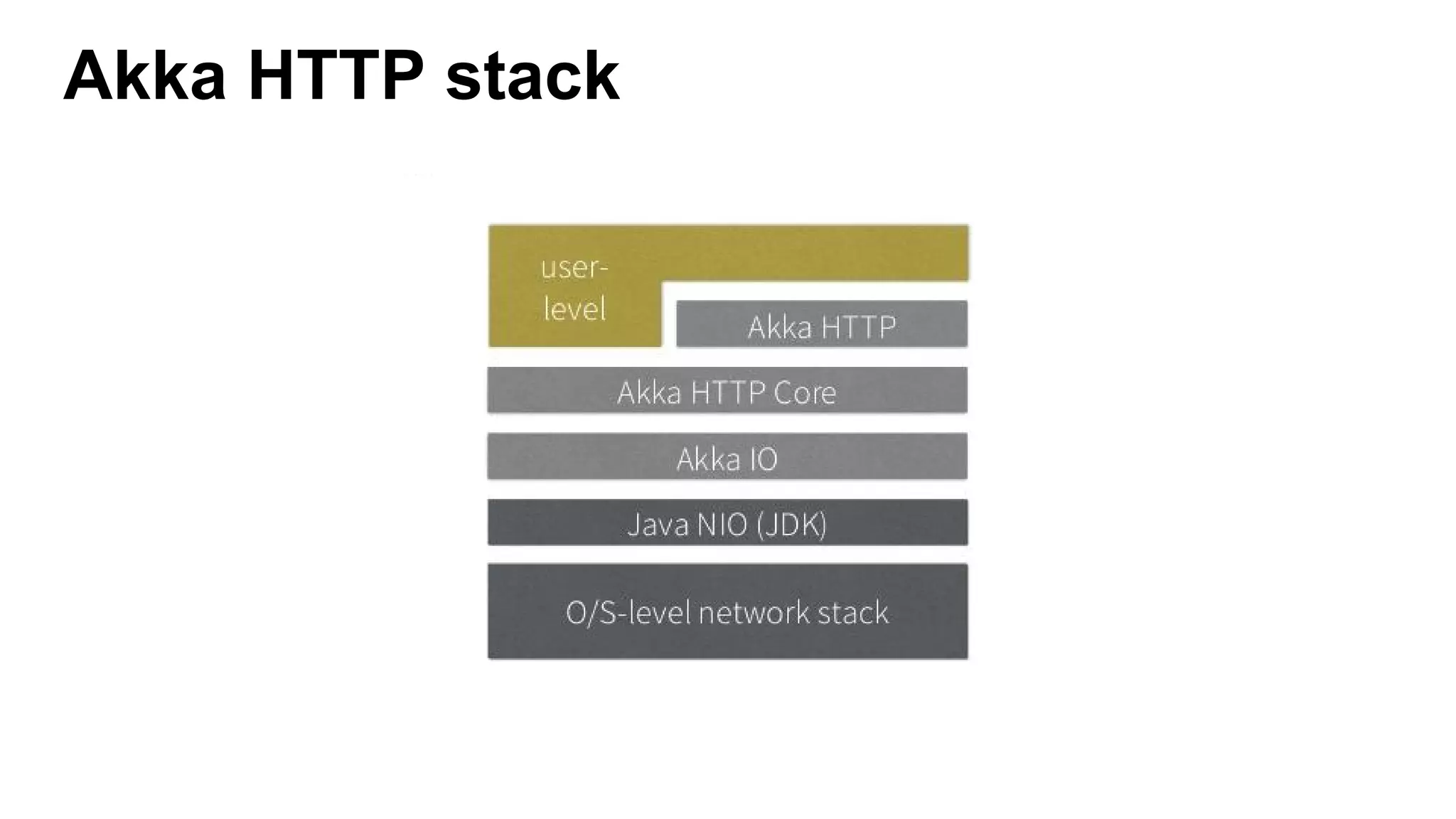
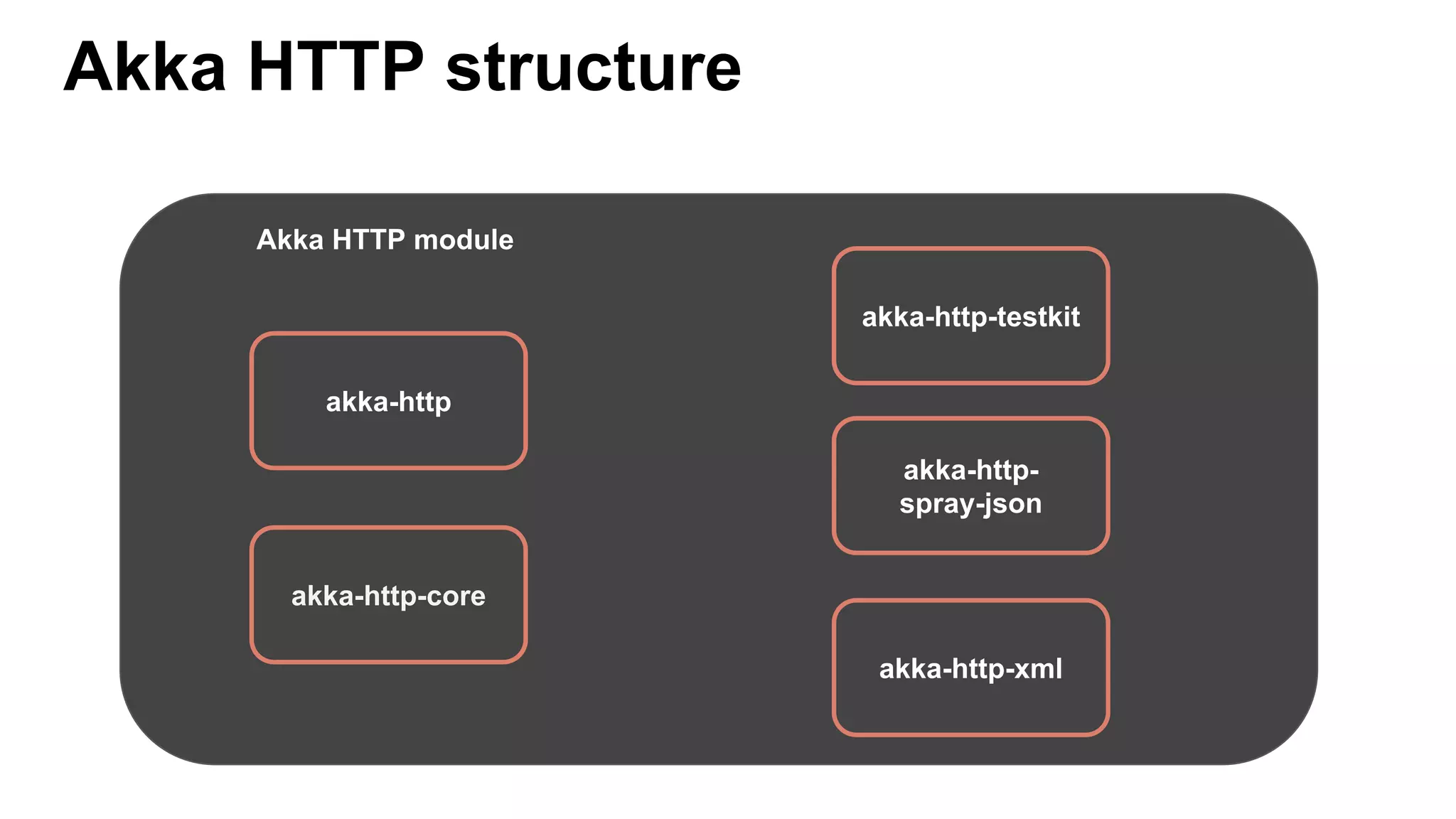
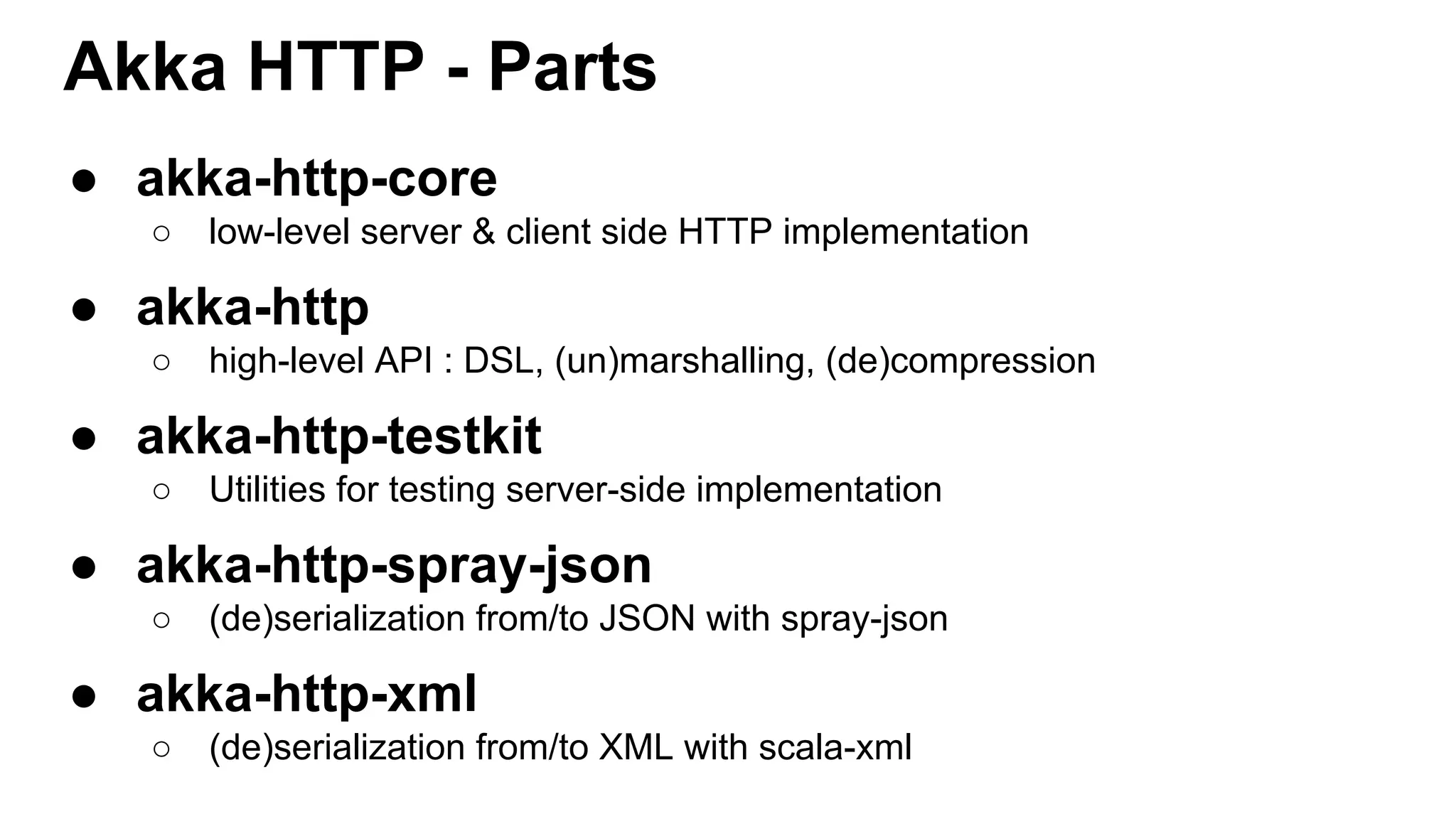
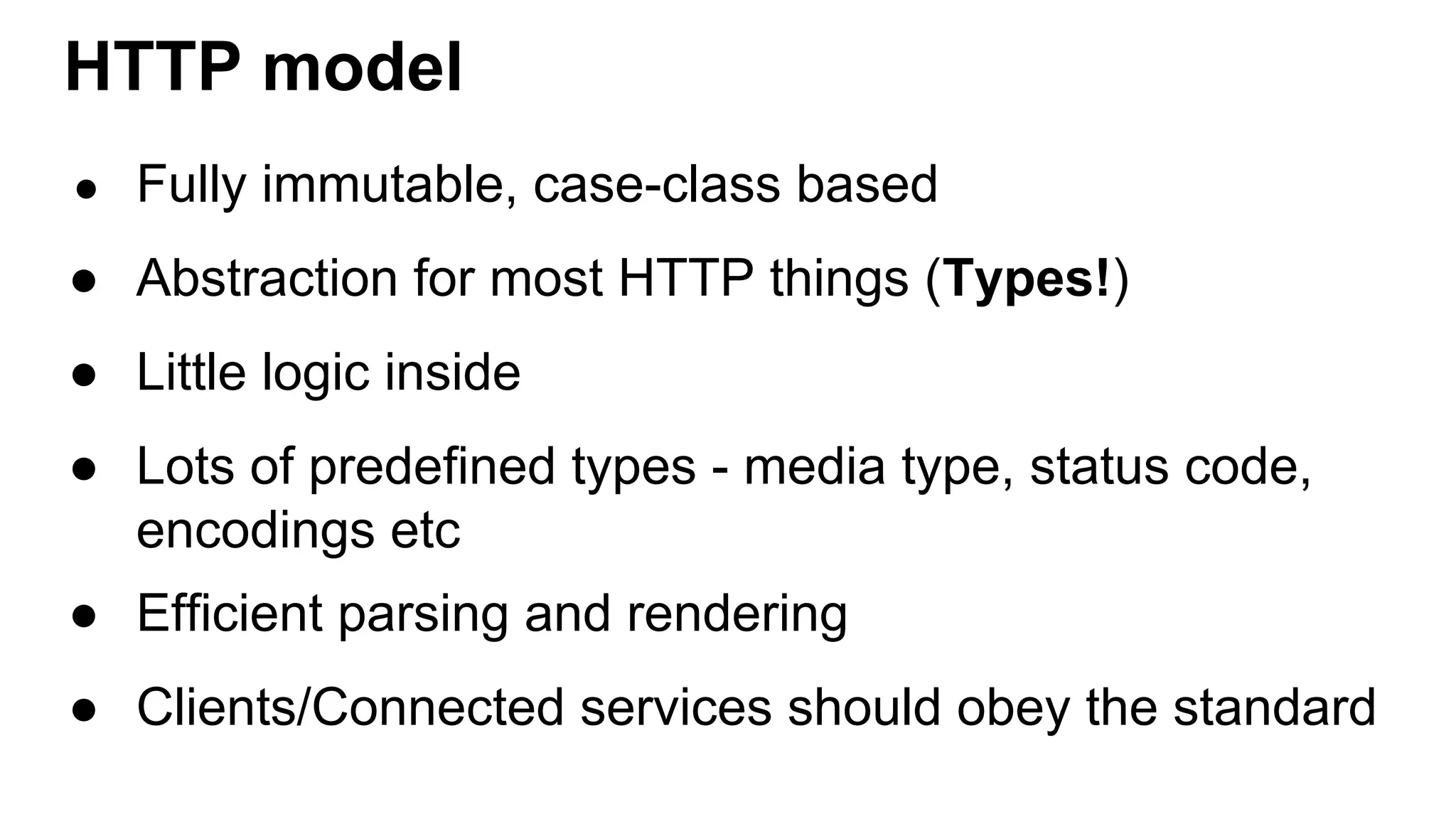
![HTTP model - Examples case class HttpRequest(method: HttpMethod = HttpMethods.GET, uri: Uri = Uri./, headers: immutable.Seq[HttpHeader] = Nil, entity: RequestEntity = HttpEntity.Empty, protocol: HttpProtocol = HttpProtocols.`HTTP/1.1`) case class HttpResponse(status: StatusCode = StatusCodes.OK, headers: immutable.Seq[HttpHeader] = Nil, entity: ResponseEntity = HttpEntity.Empty, protocol: HttpProtocol = HttpProtocols.`HTTP/1.1`) case class Uri(scheme: String, authority: Authority, path: Path, rawQueryString: Option[String], fragment: Option[String])](https://image.slidesharecdn.com/buildingscalablerestserviceusingakkahttp-161107190200/75/Building-scalable-rest-service-using-Akka-HTTP-20-2048.jpg)
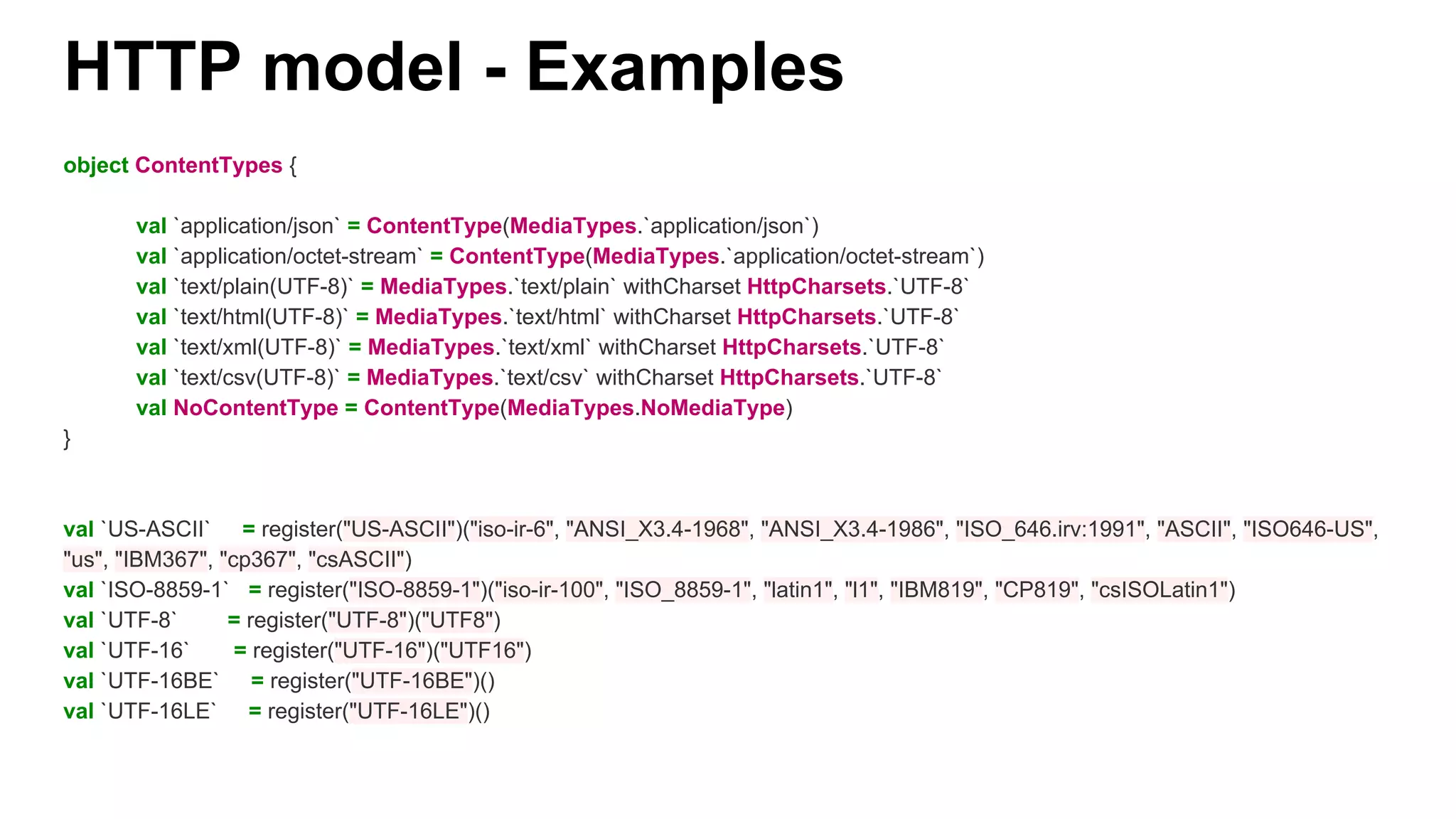
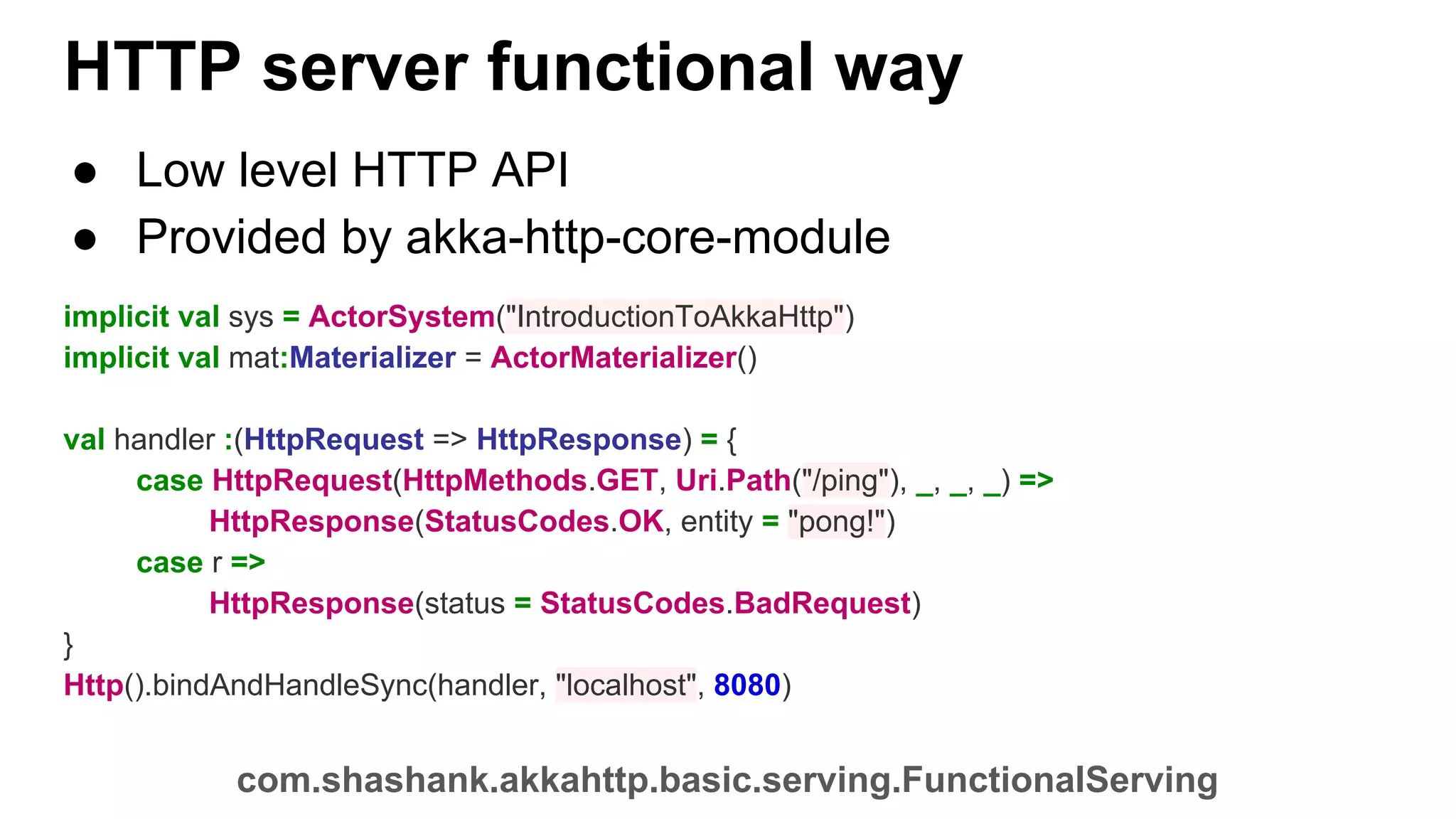

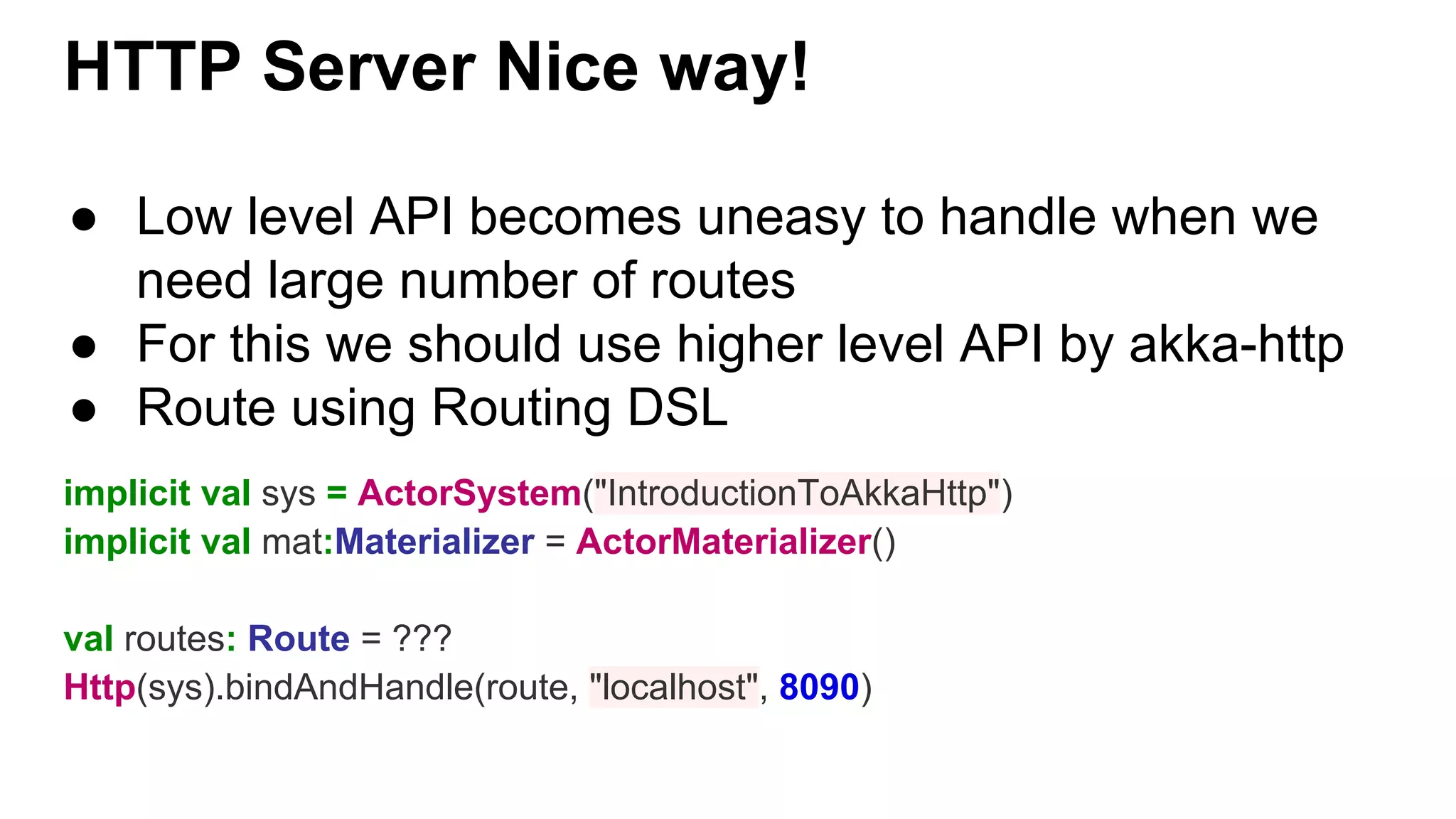
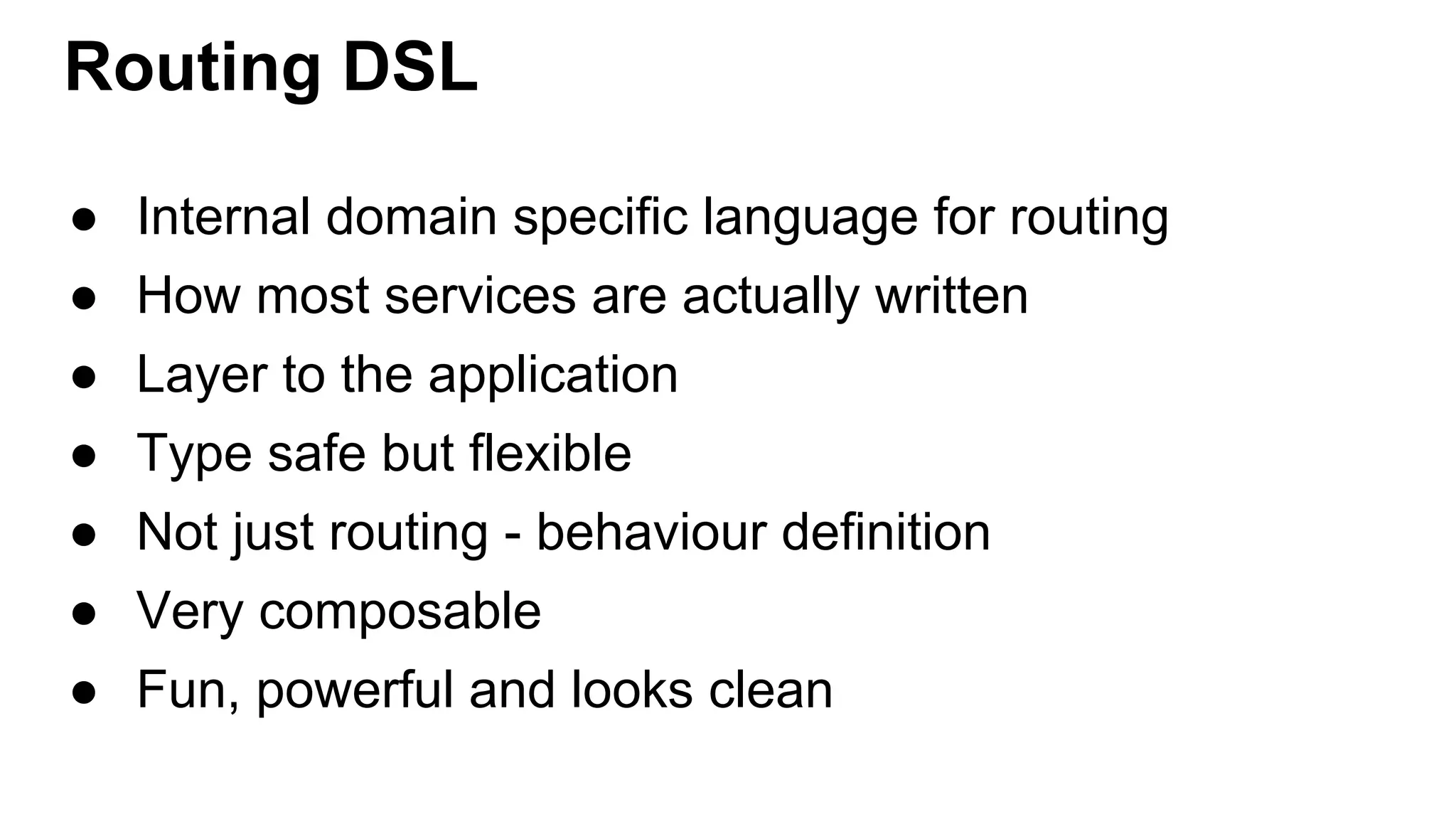
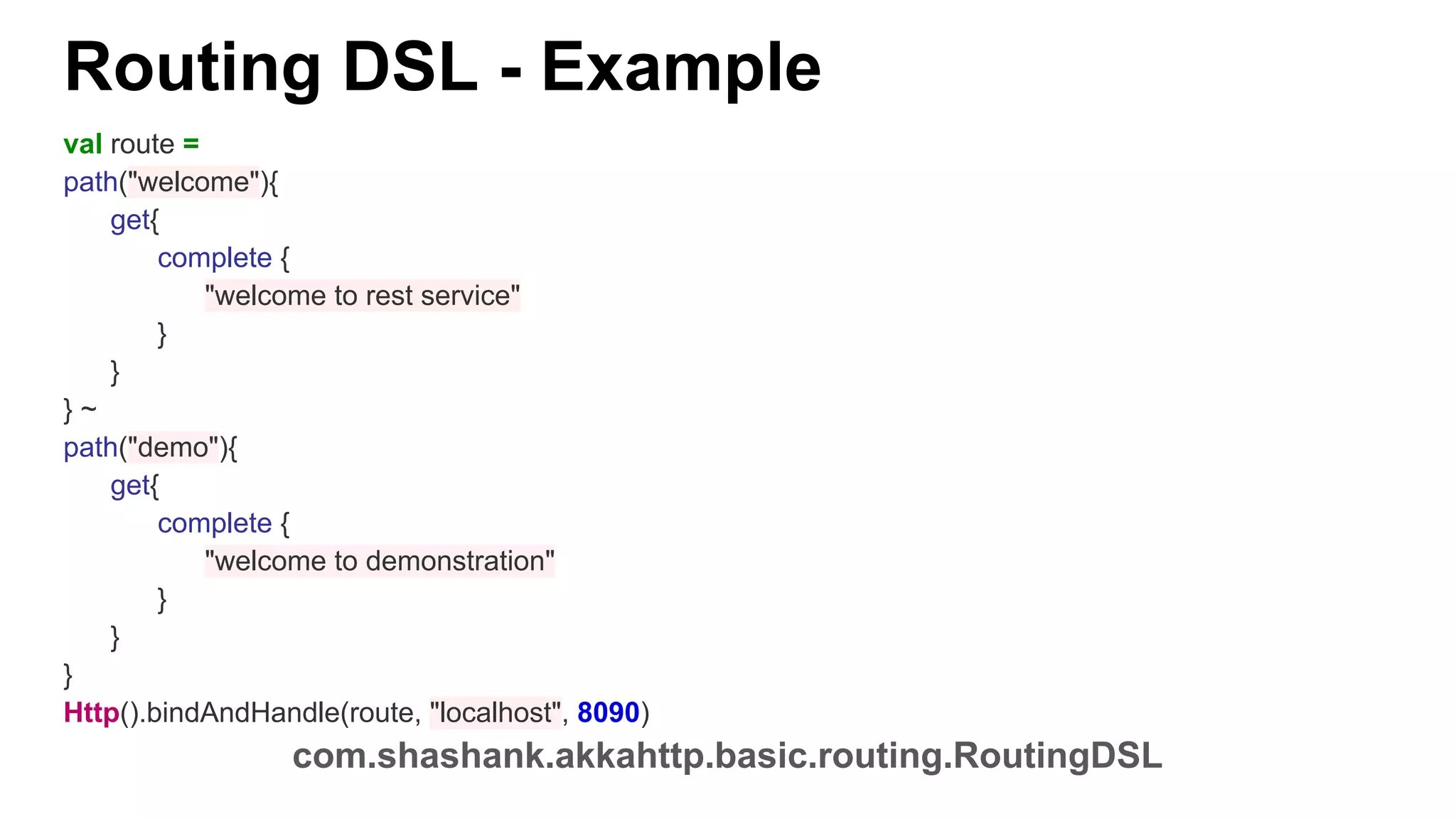
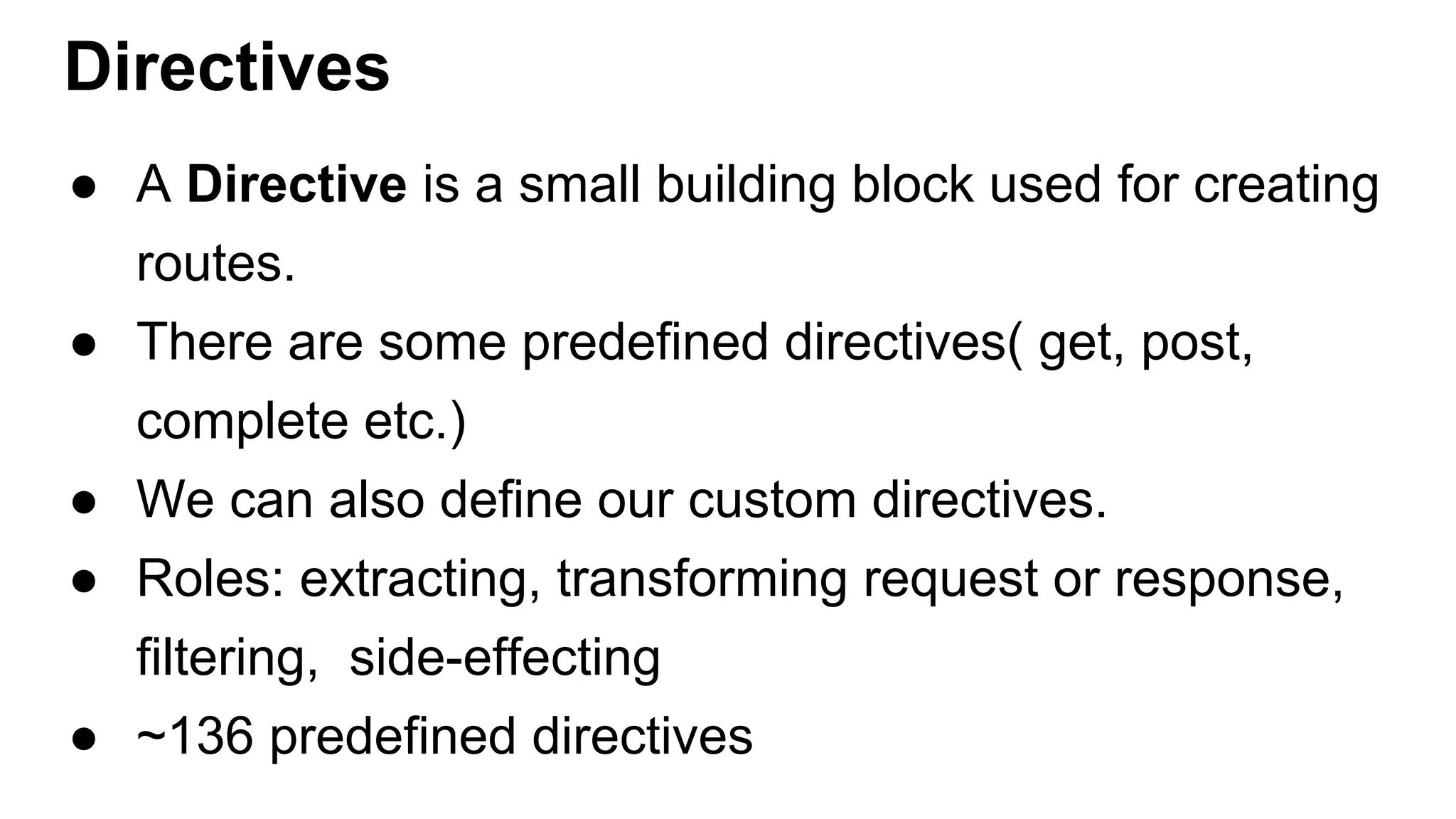
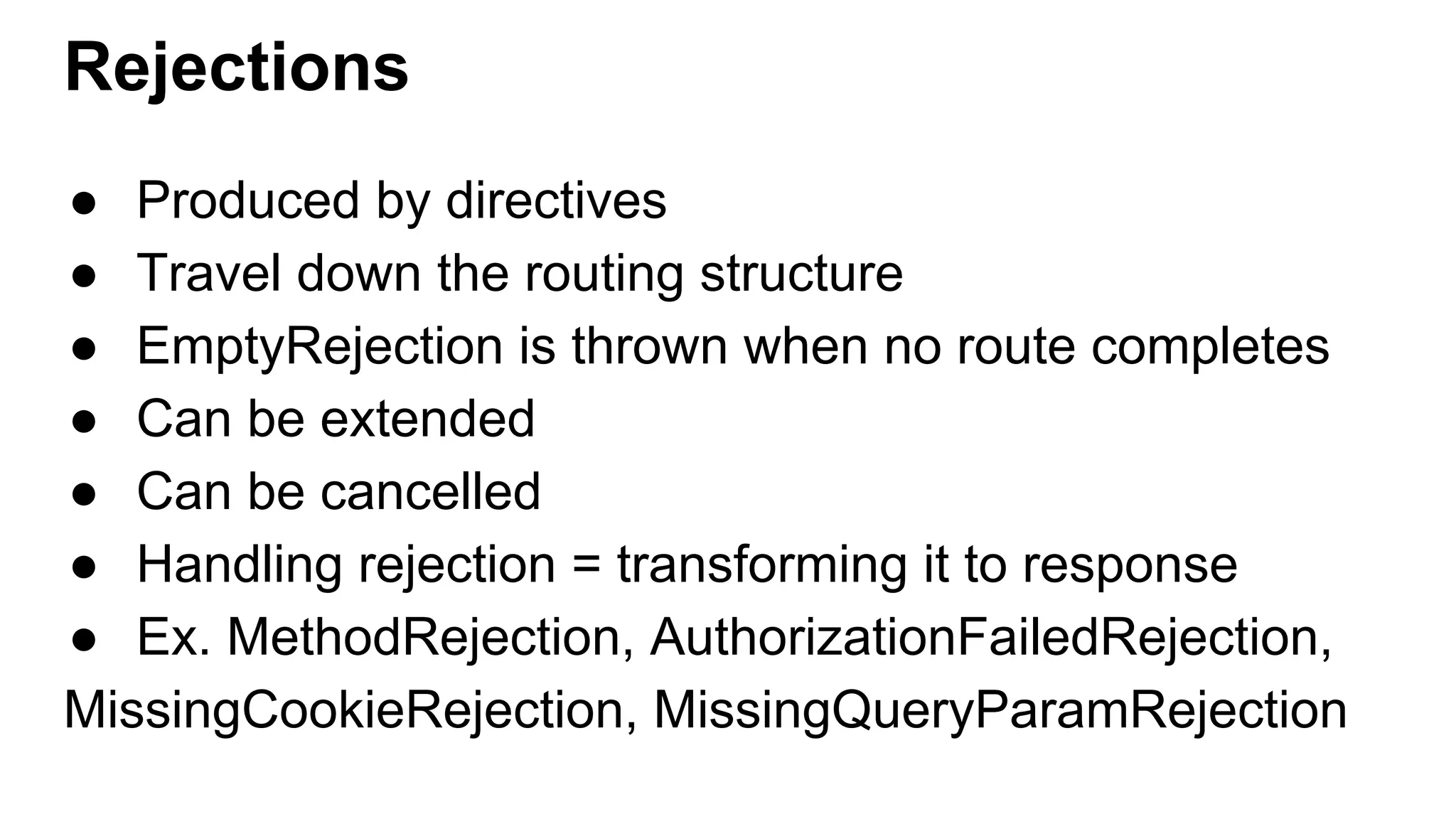
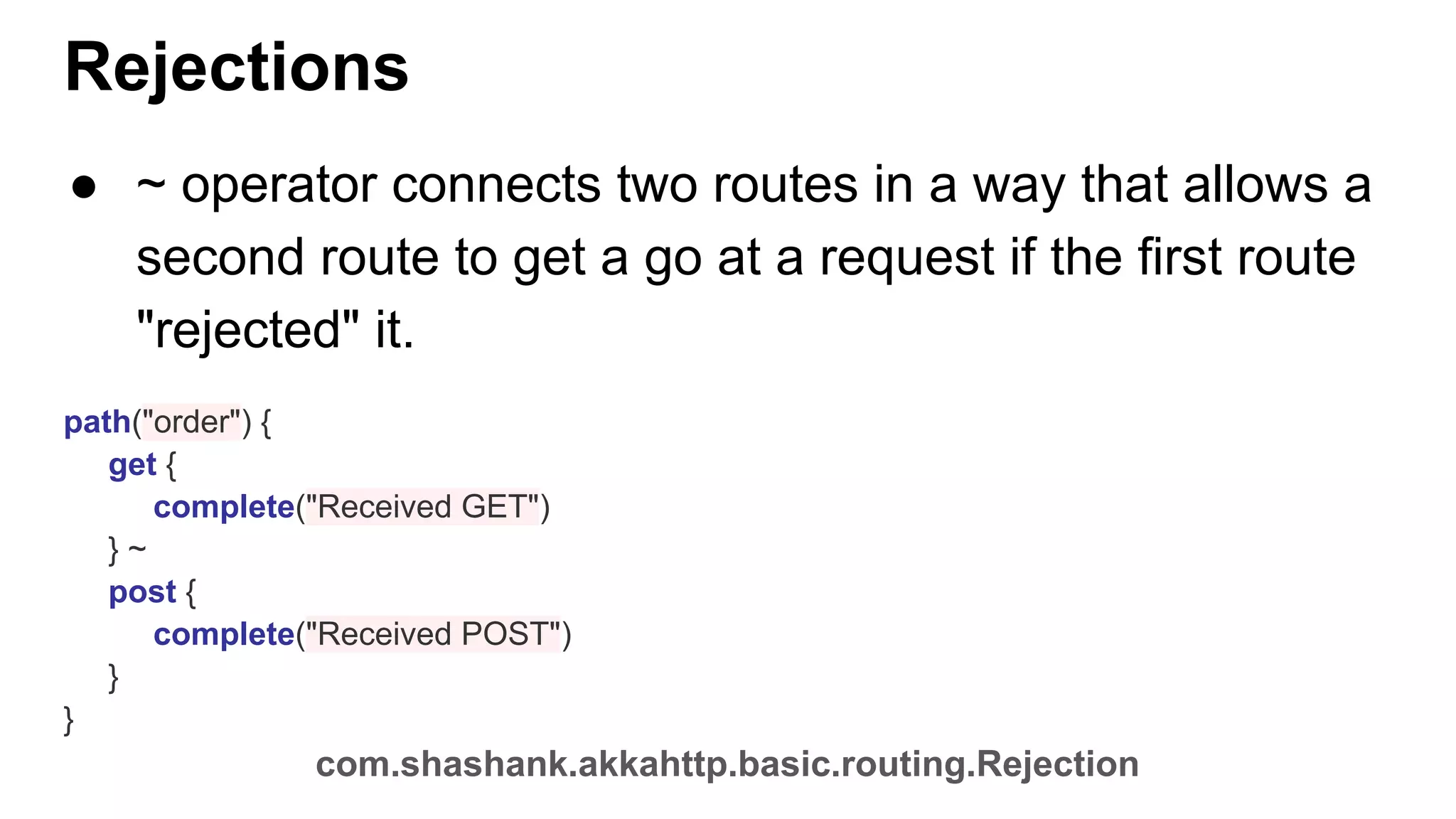
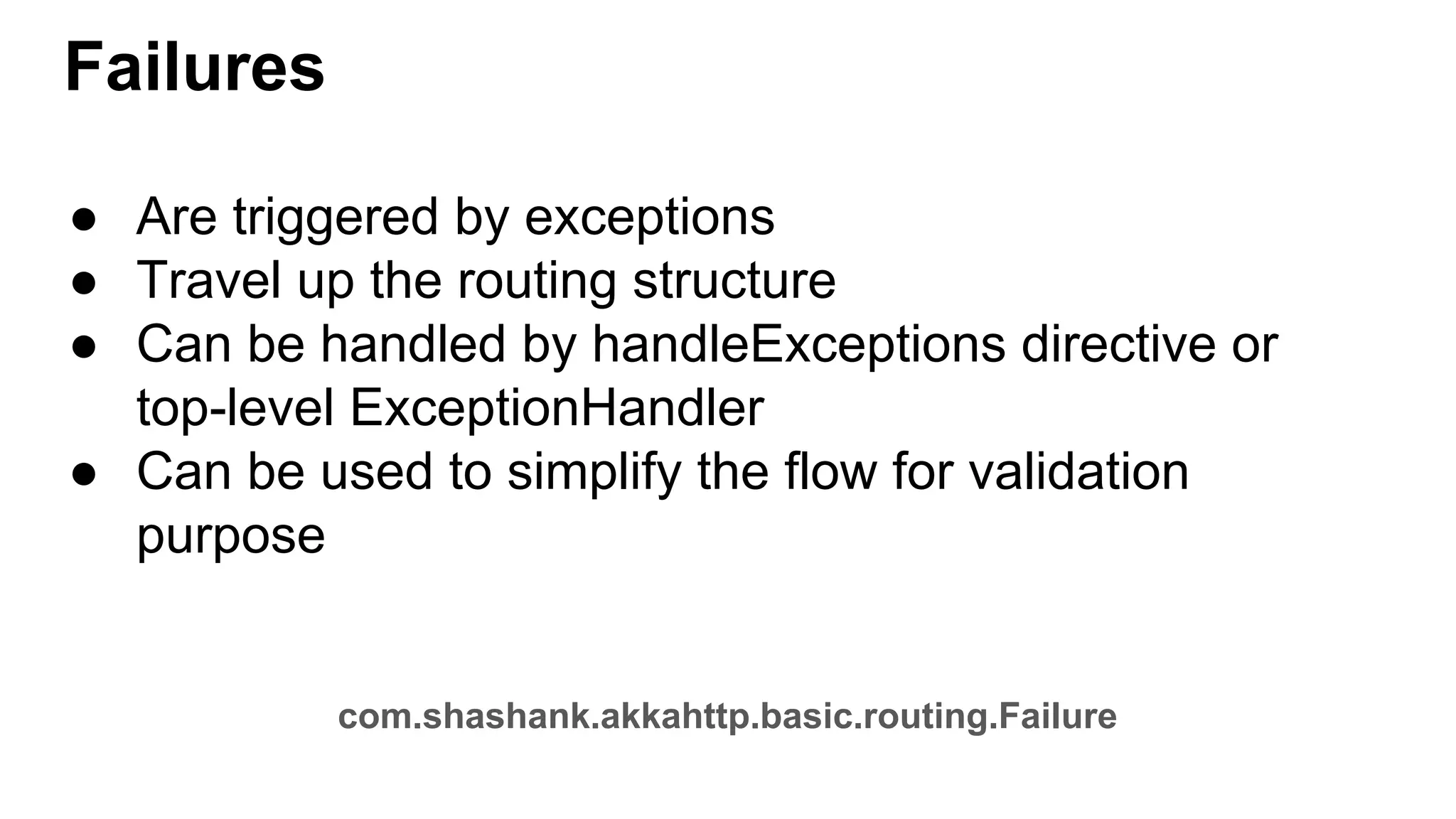
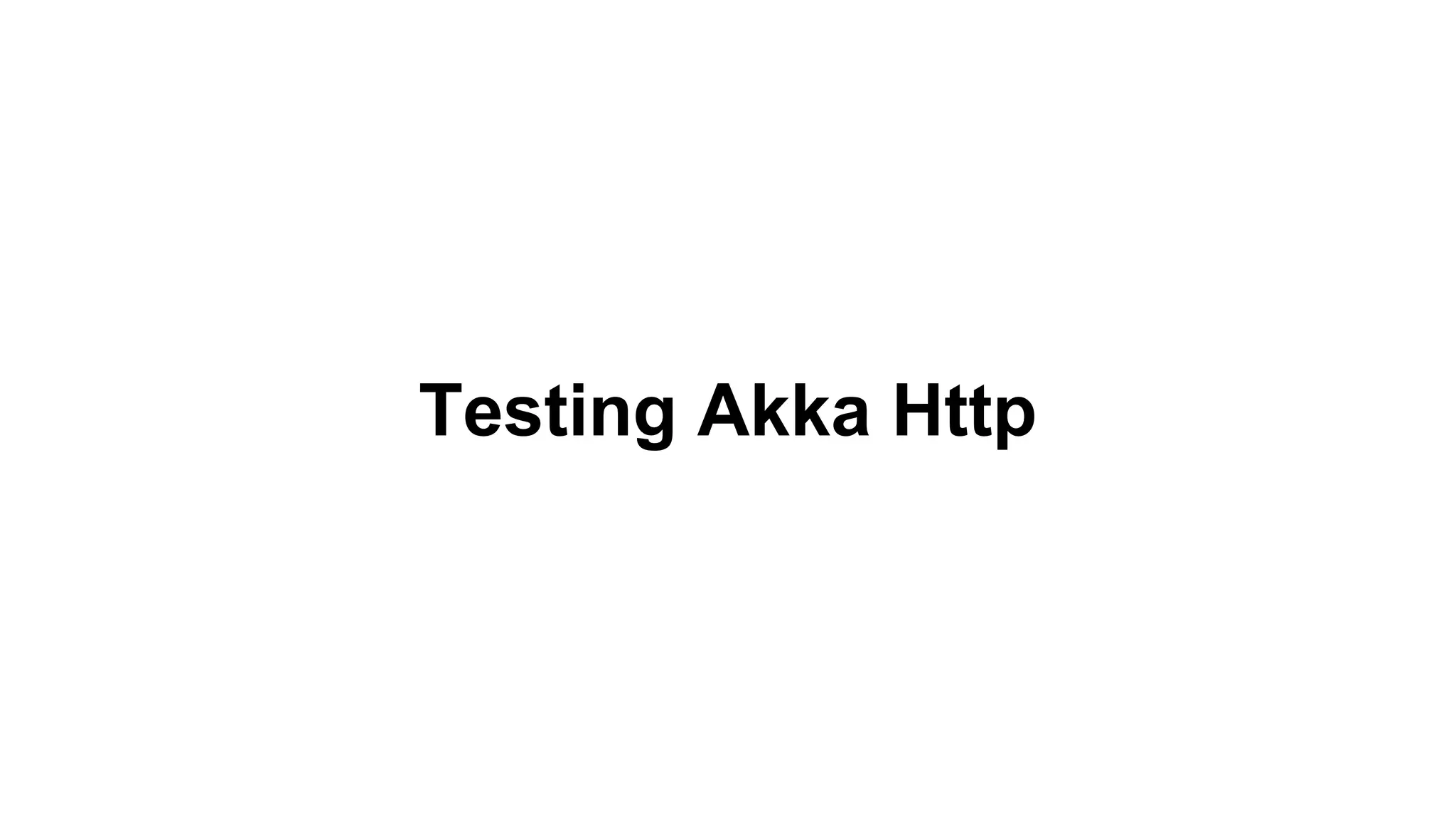
![● Simple and straightforward ● Allows to assert responses returned for given requests ● Integrates well with Scalatest Get("/ping") ~> route ~> check{ status === OK entity.as[String] === "It Works!" } com.shashank.akkahttp.basic.routing.TestKit Testkit](https://image.slidesharecdn.com/buildingscalablerestserviceusingakkahttp-161107190200/75/Building-scalable-rest-service-using-Akka-HTTP-32-2048.jpg)
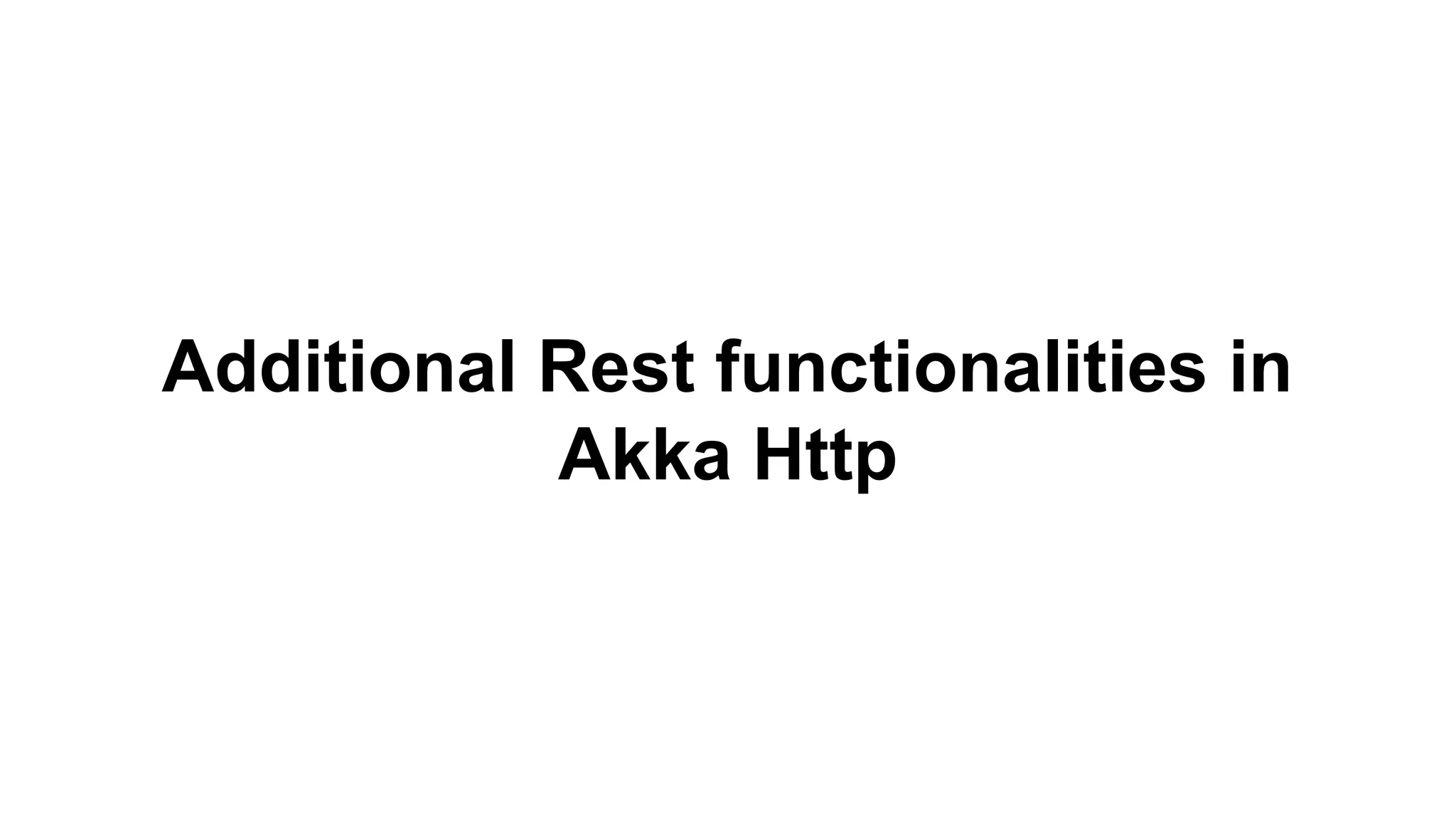
![Query parameters def parameters(param: <ParamDef[T]>): Directive1[T] ● Mandatory parameters ● Optional parameters ● Parameters with required value ● Deserialized parameter ● Repeated parameter ● Deserialized parameter into Case class](https://image.slidesharecdn.com/buildingscalablerestserviceusingakkahttp-161107190200/75/Building-scalable-rest-service-using-Akka-HTTP-34-2048.jpg)
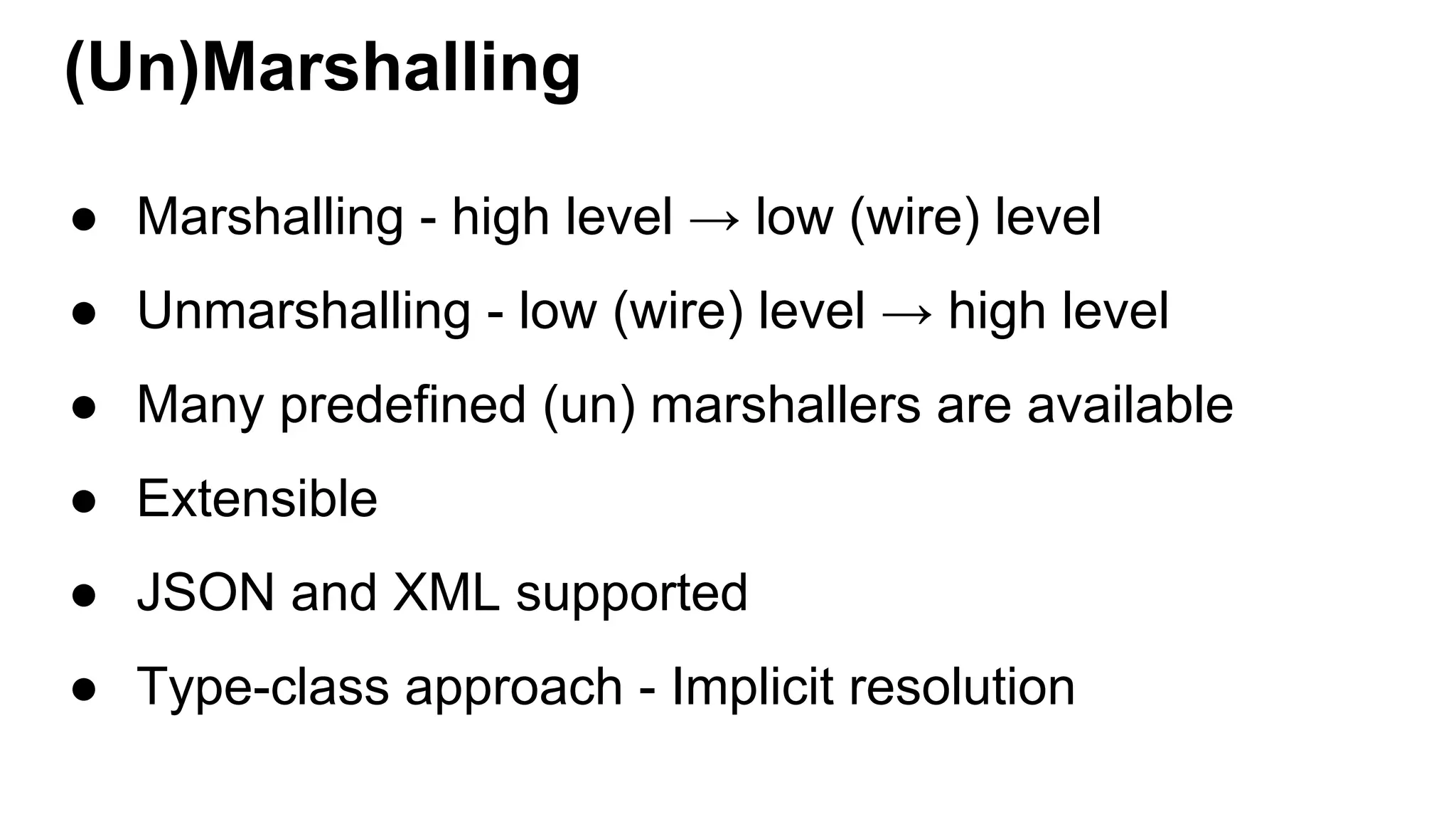
![Custom Http entity data ● Akka Http JSON support ● Support conversion to and from JVM objects to wire representation like JSON, XML etc ● SprayJsonSupport provides a FromEntityUnmarshaller[T] and ToEntityMarshaller[T] for every type T with Spray Json Reader/Writer com.shashank.akkahttp.basic.routing.CustomEntityWithJson](https://image.slidesharecdn.com/buildingscalablerestserviceusingakkahttp-161107190200/75/Building-scalable-rest-service-using-Akka-HTTP-36-2048.jpg)
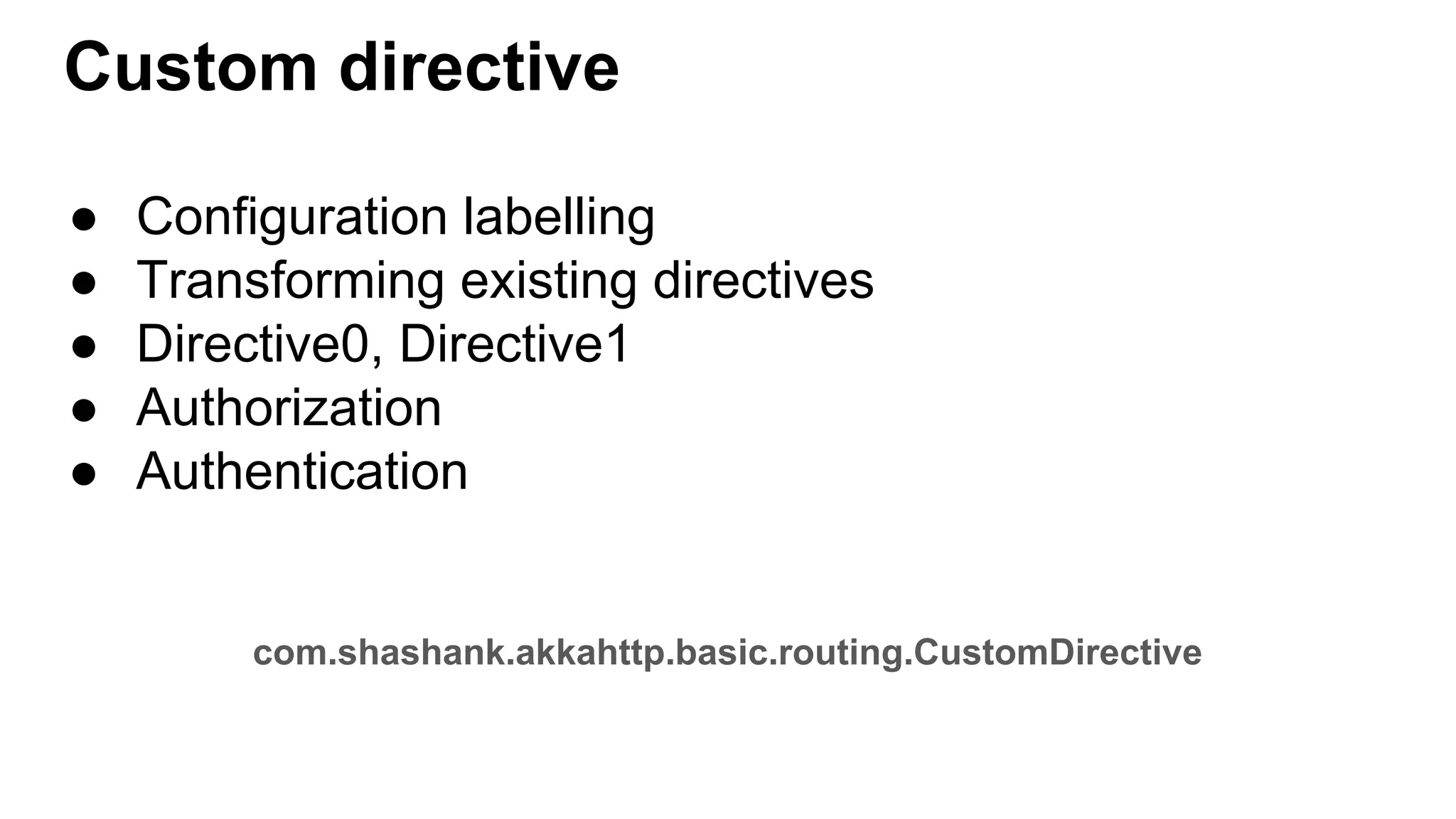
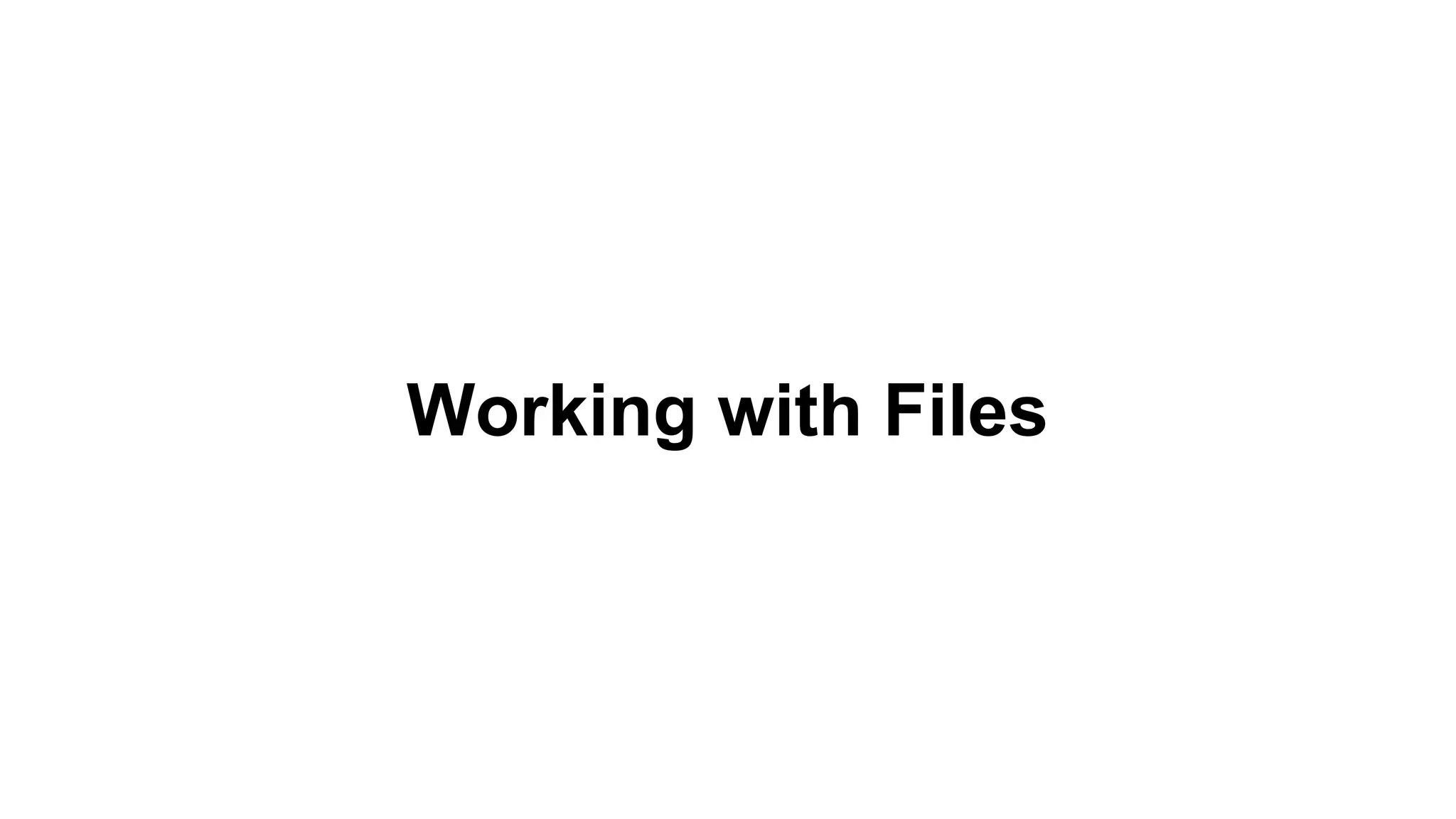
![File upload def uploadedFile(fieldName: String): Directive1[(FileInfo, File)] ● Streams the contents of a file uploaded as a multipart form into a temporary file on disk ● Cannot start processing the file unless it written completely to temporary file com.shashank.akkahttp.basic.routing.FileUpload](https://image.slidesharecdn.com/buildingscalablerestserviceusingakkahttp-161107190200/75/Building-scalable-rest-service-using-Akka-HTTP-39-2048.jpg)
![File upload stream def fileUpload(fieldName: String): Directive1[(FileInfo, Source[ByteString, Any])] ● Simple access to the stream of bytes for a file uploaded as a multipart form together with metadata about the upload as extracted value. com.shashank.akkahttp.basic.routing.FileUploadStream](https://image.slidesharecdn.com/buildingscalablerestserviceusingakkahttp-161107190200/75/Building-scalable-rest-service-using-Akka-HTTP-40-2048.jpg)
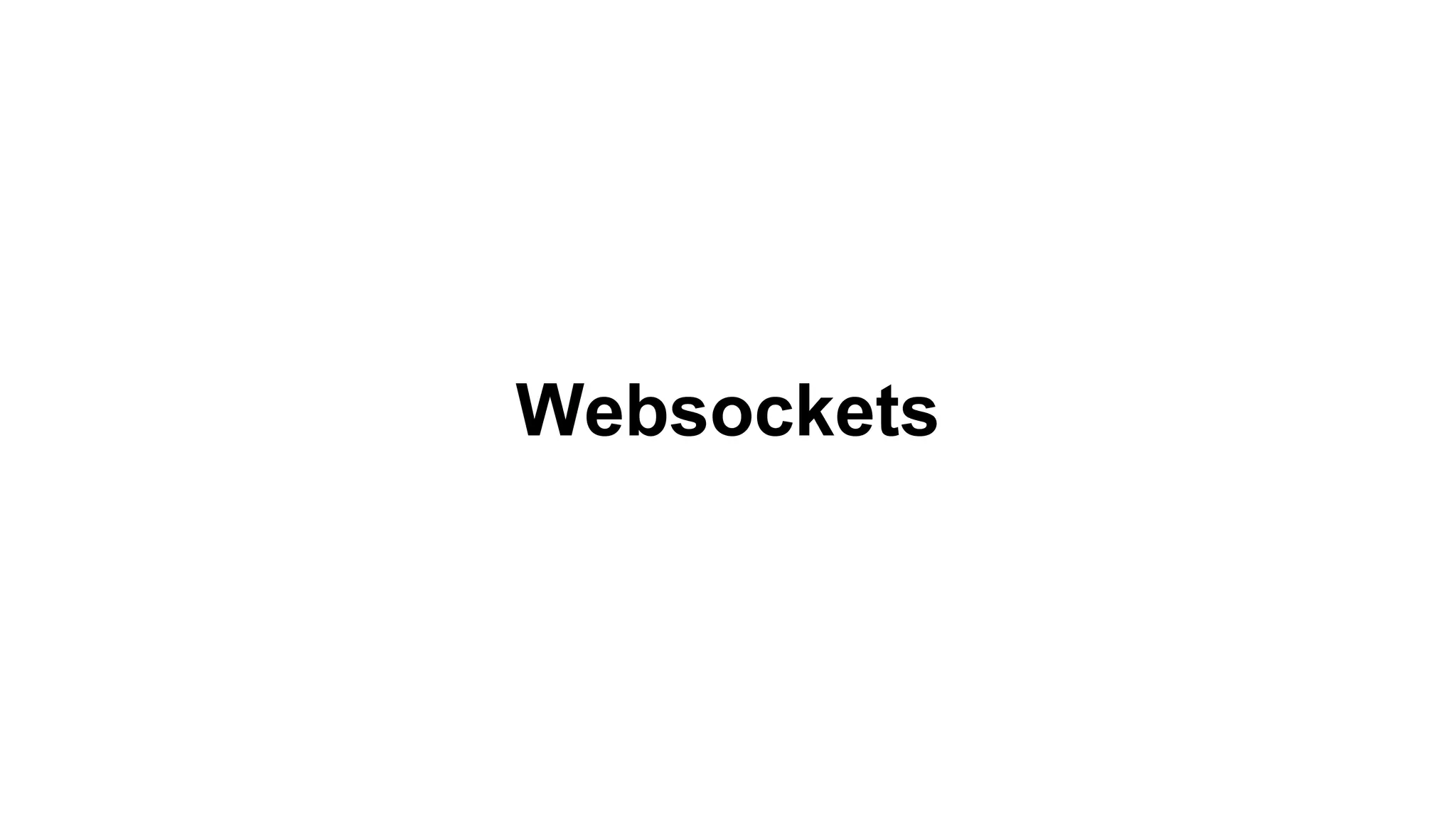
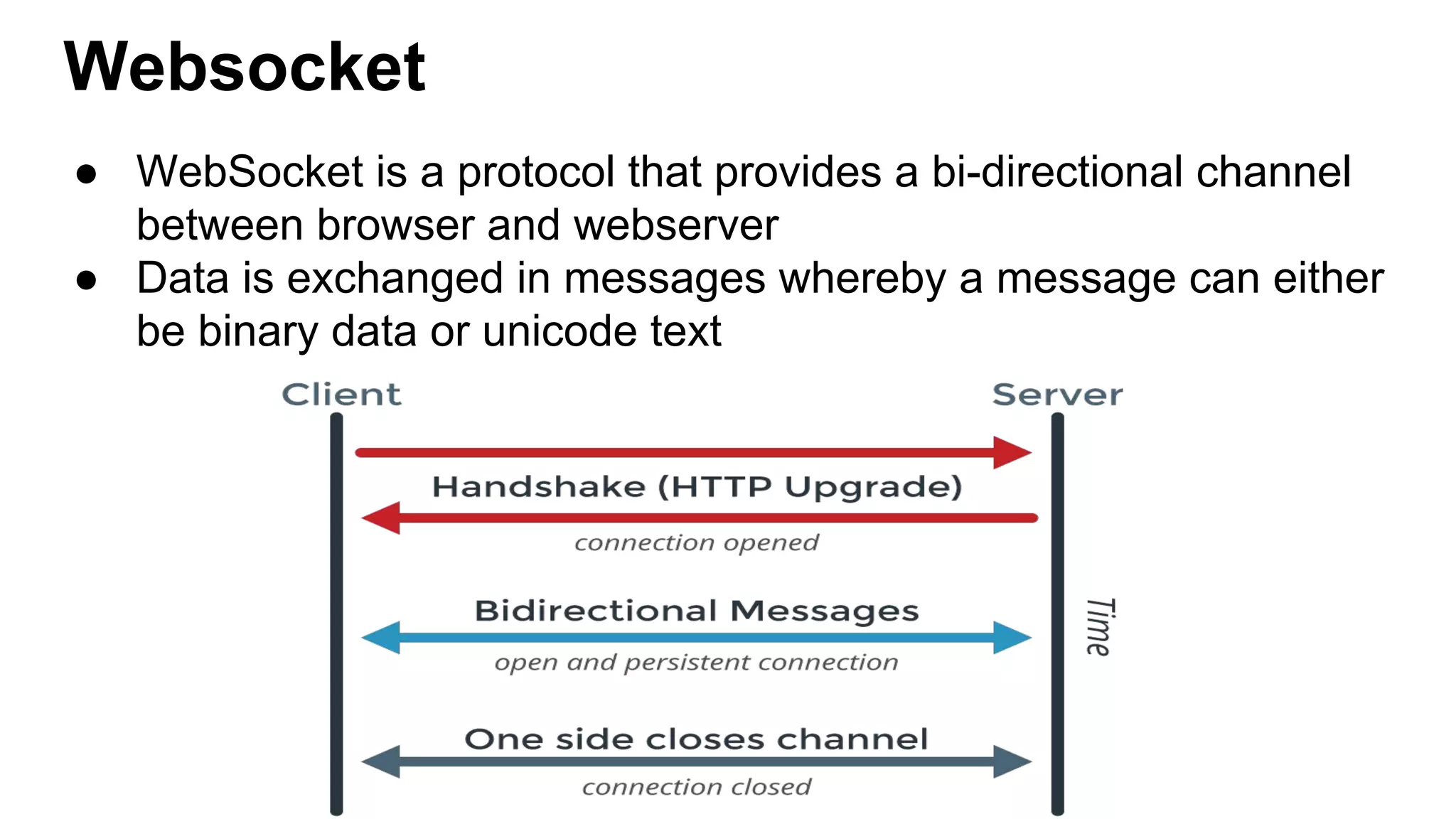
![Server side websocket in AkkaHttp ● Akka HTTP provides a stream-based implementation of the WebSocket protocol ● basic unit of data exchange in the WebSocket is a message i.e TextMessage or BinaryMessage ● Websocket handshake is managed and hidden from application layer ● A message handler is expected to be implemented as a Flow[Message, Message, Any] ● Testing Websocket using WSProbe com.shashank.akkahttp.basic.routing.Websocket](https://image.slidesharecdn.com/buildingscalablerestserviceusingakkahttp-161107190200/75/Building-scalable-rest-service-using-Akka-HTTP-43-2048.jpg)
